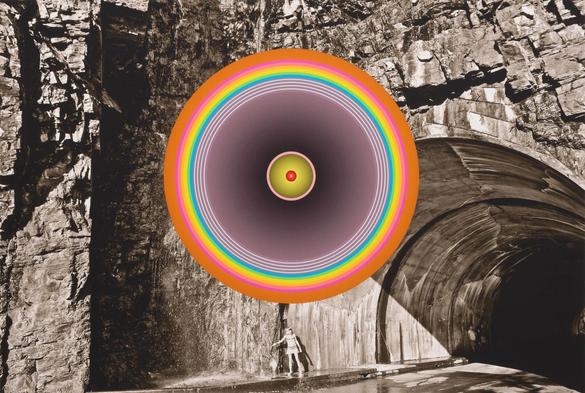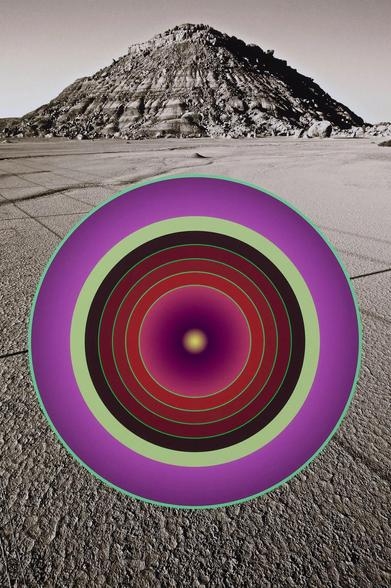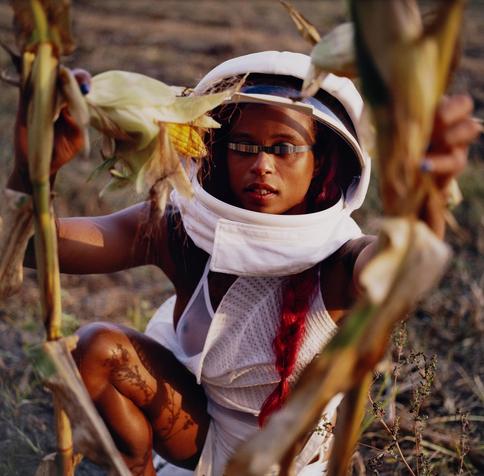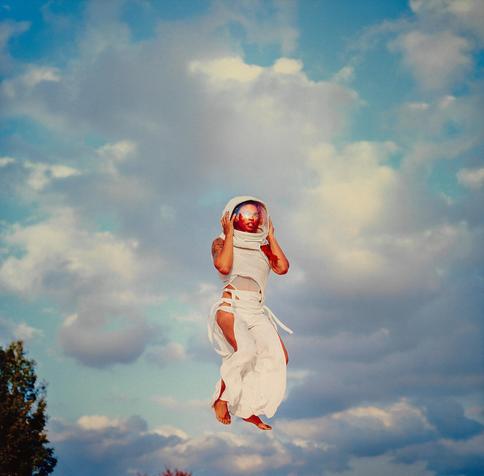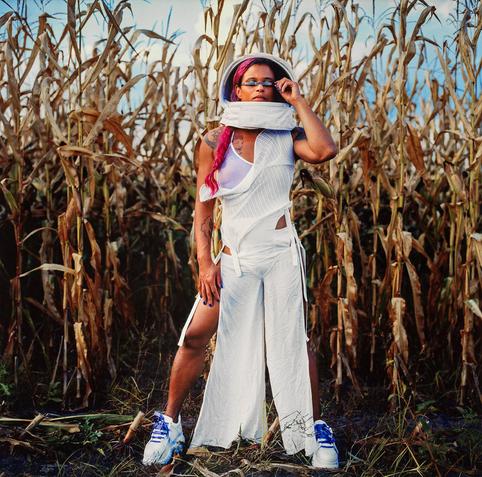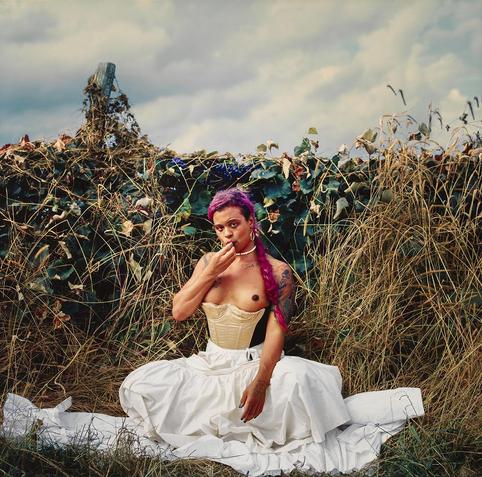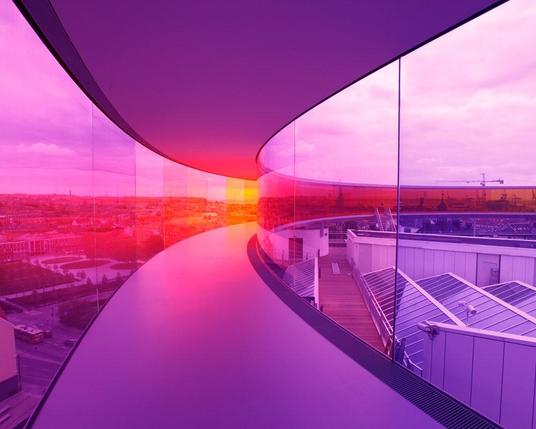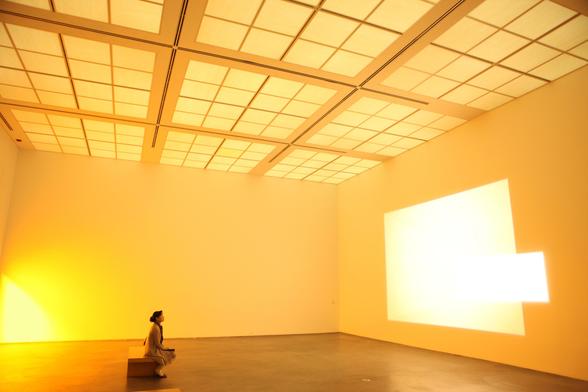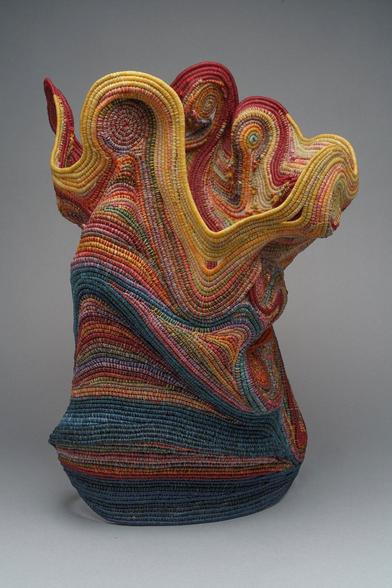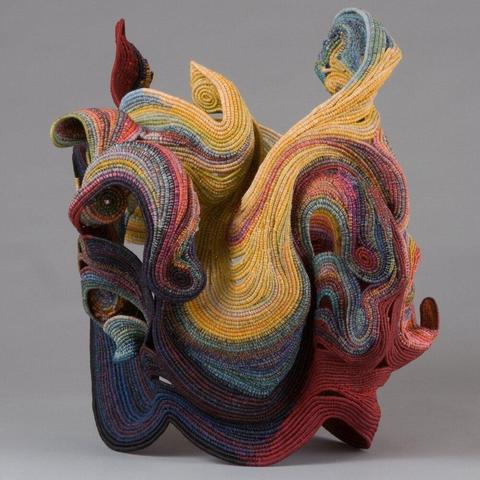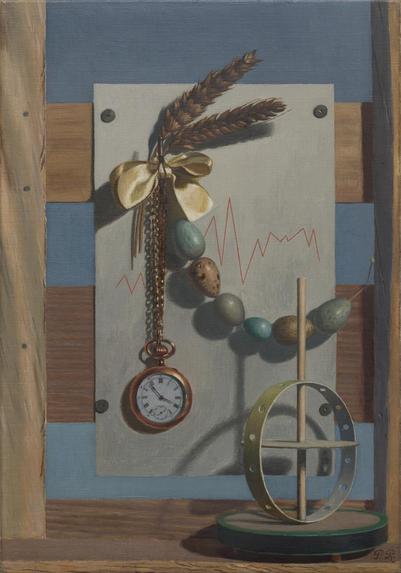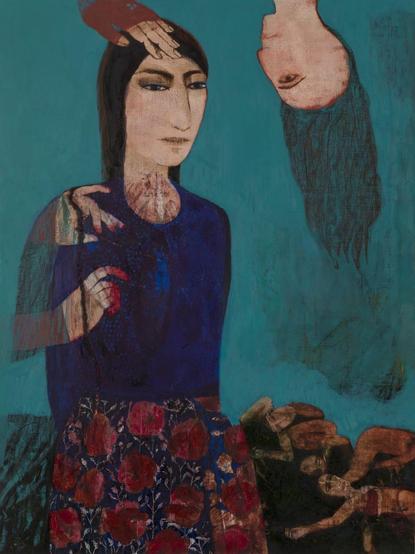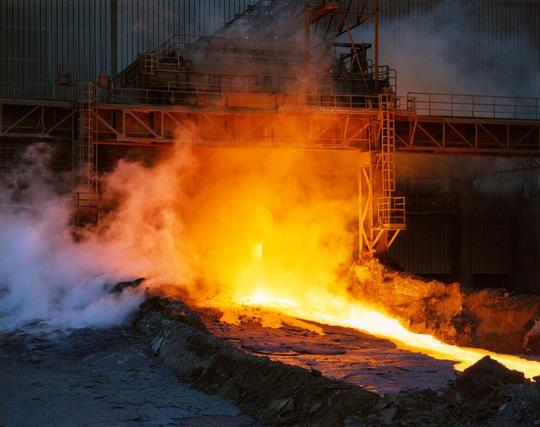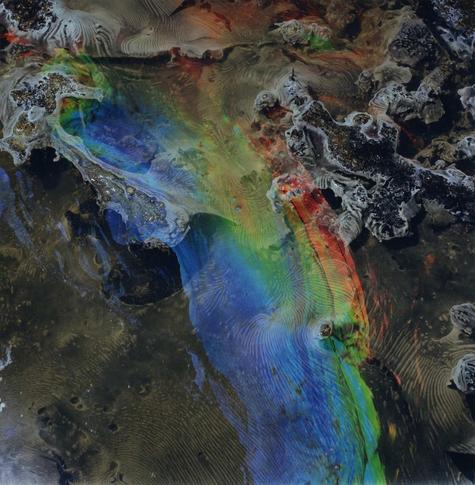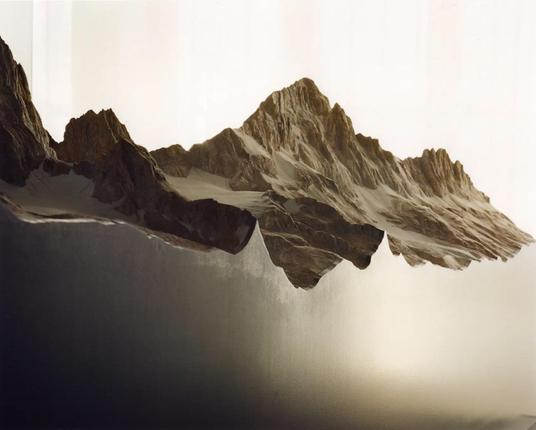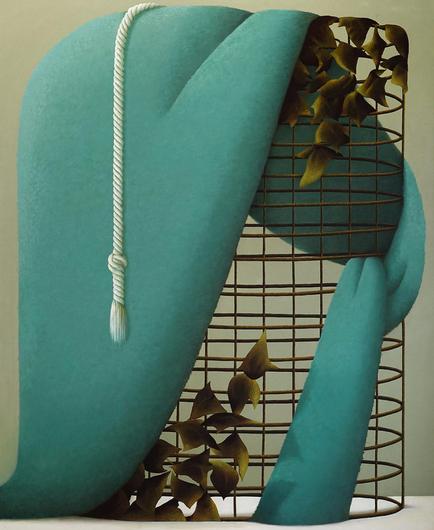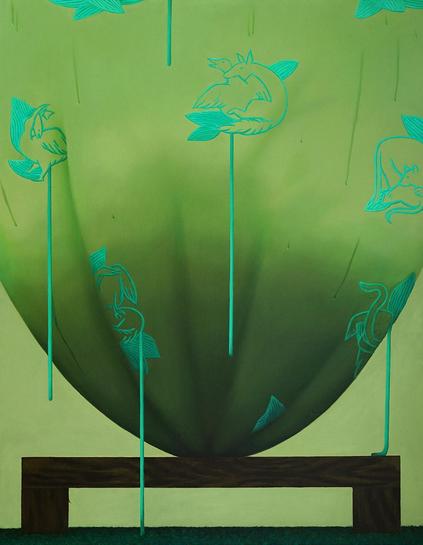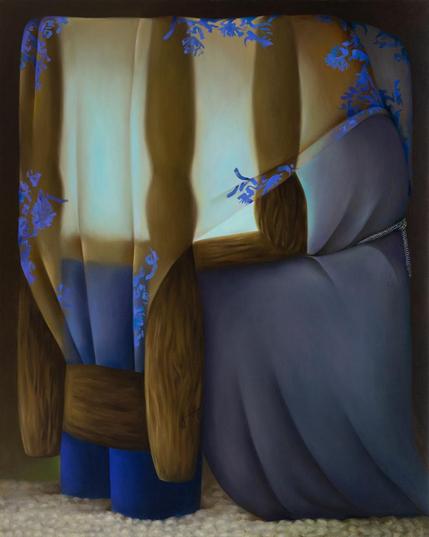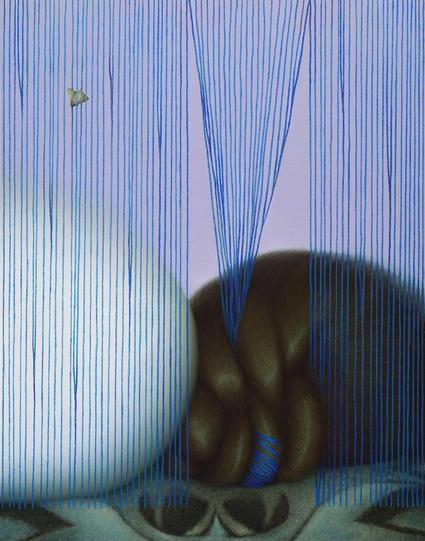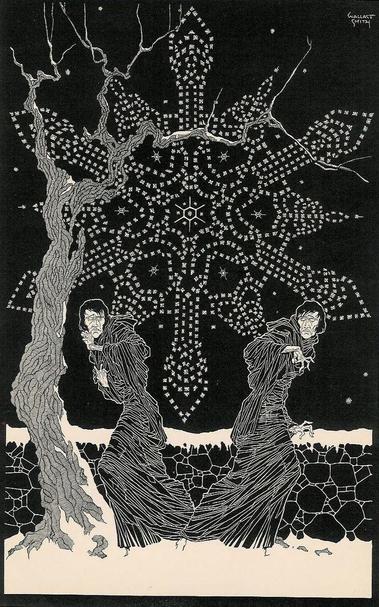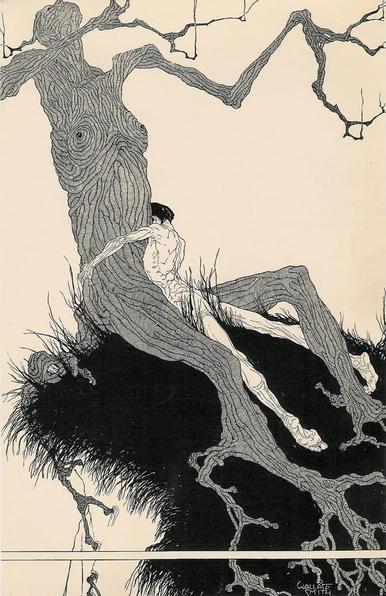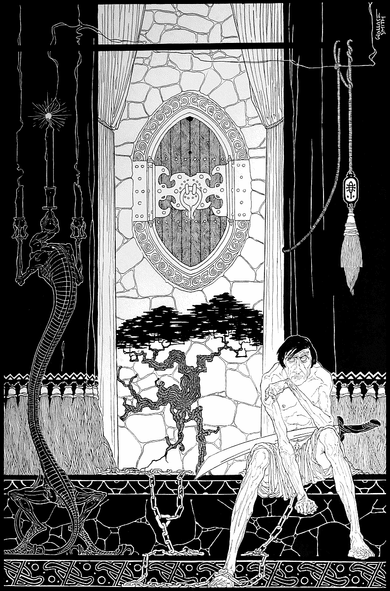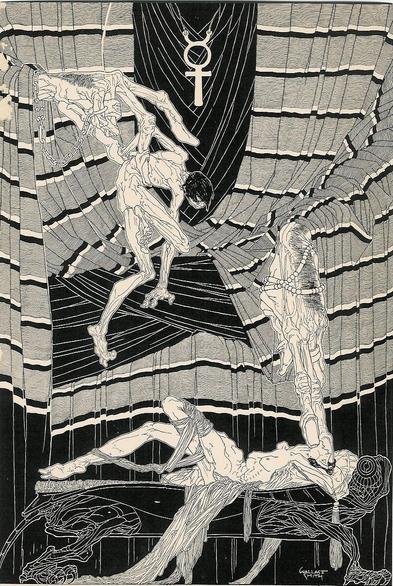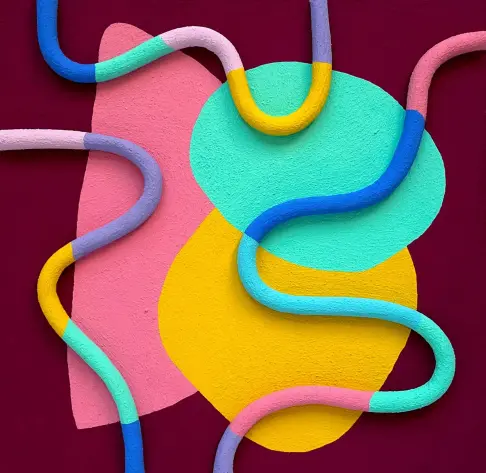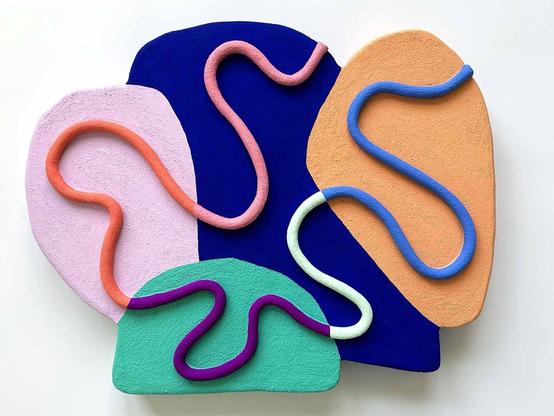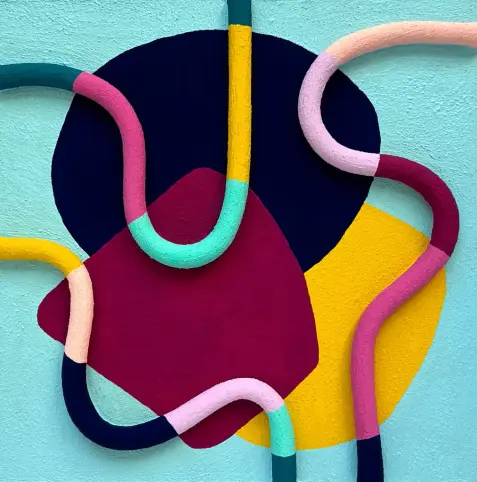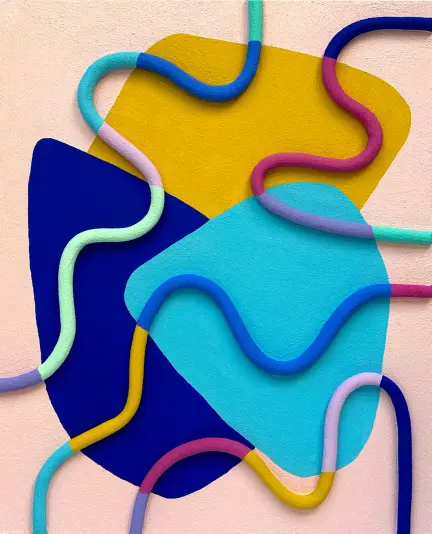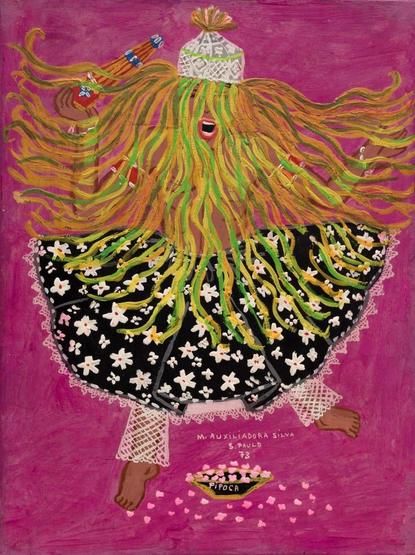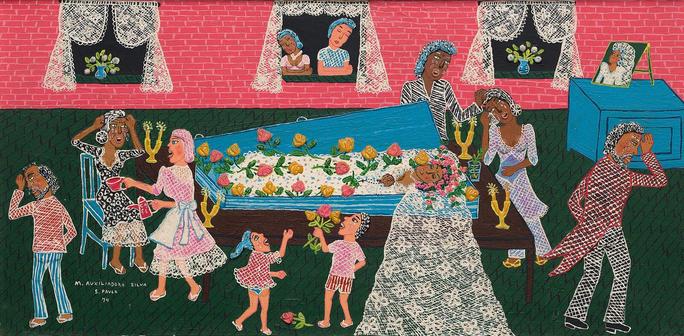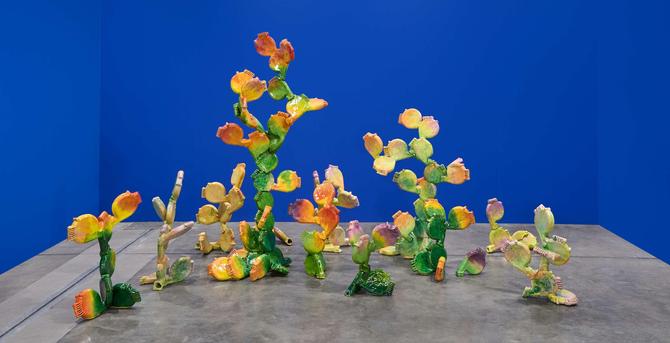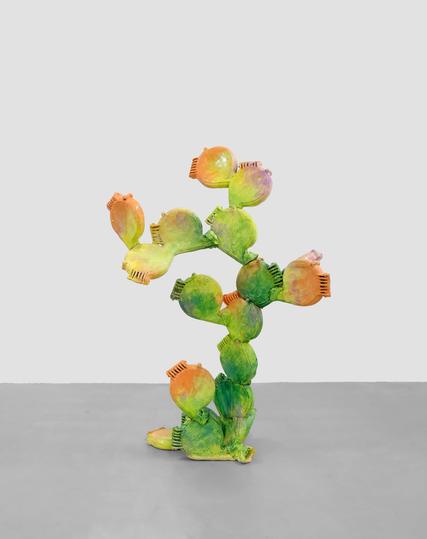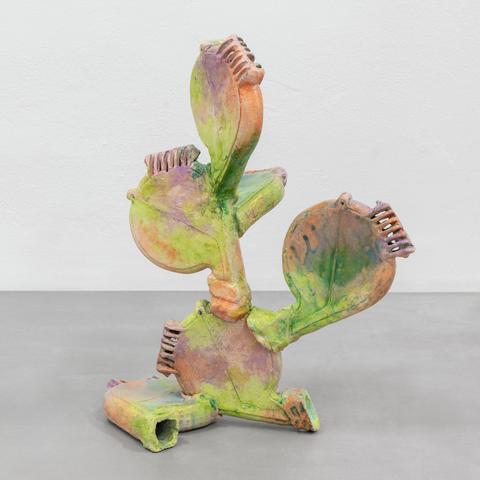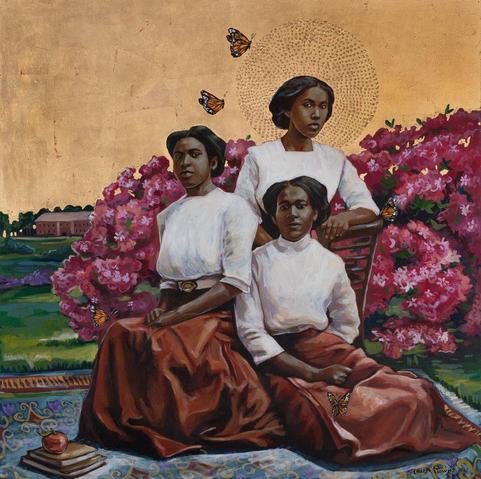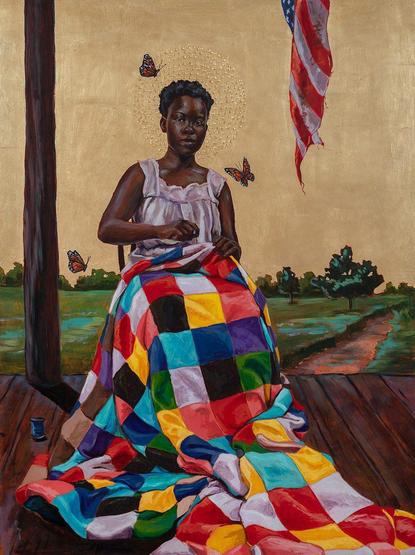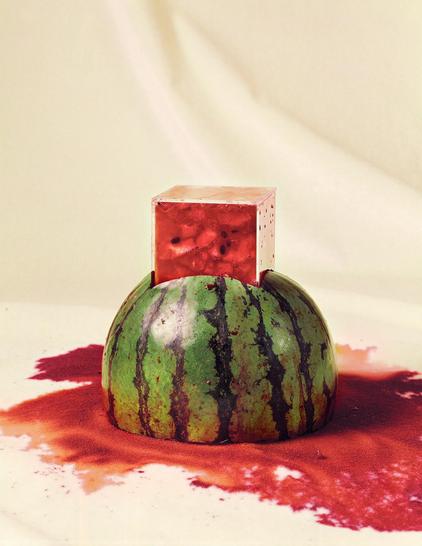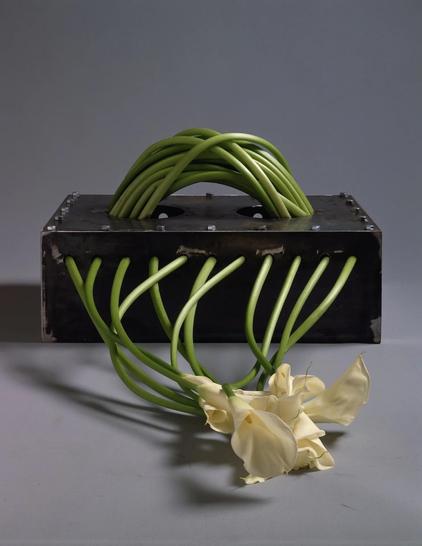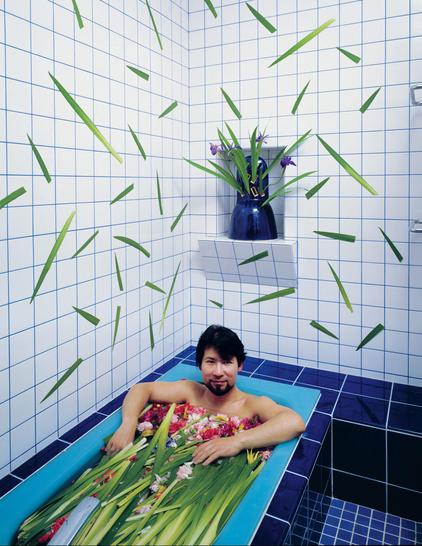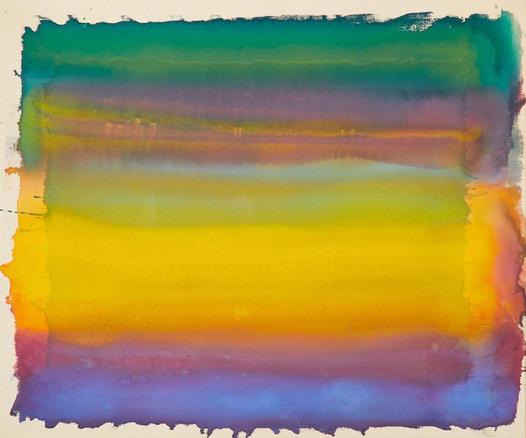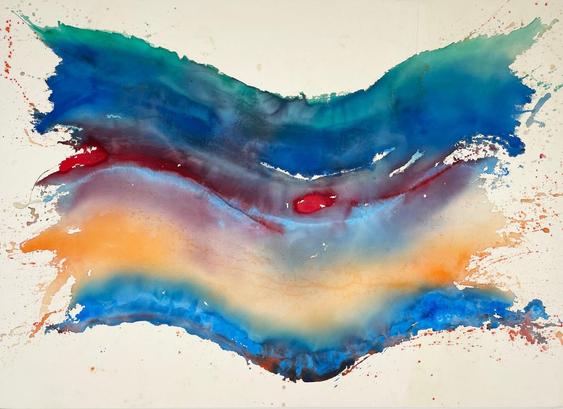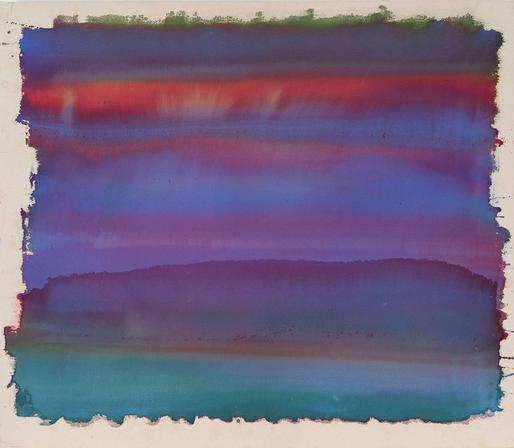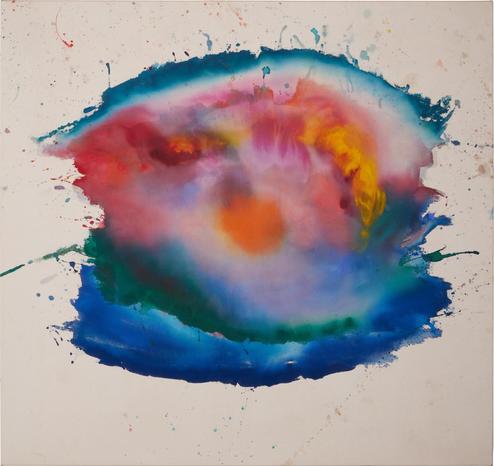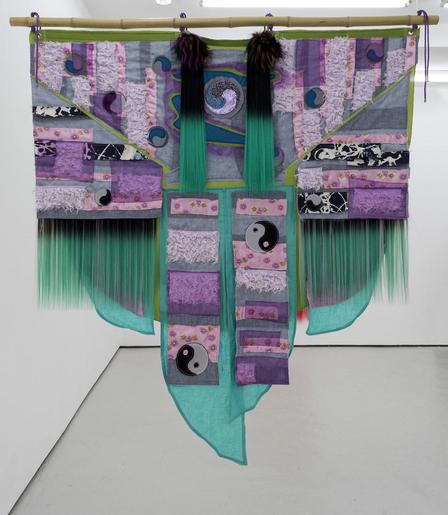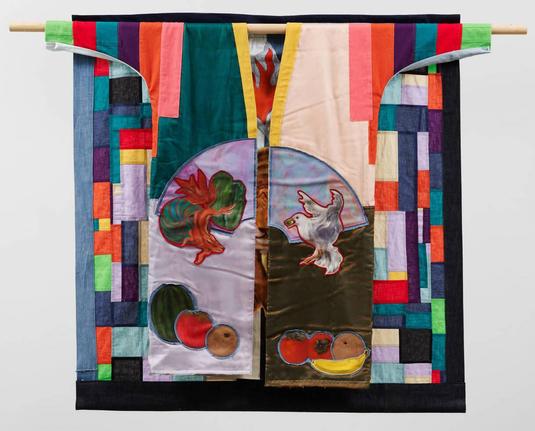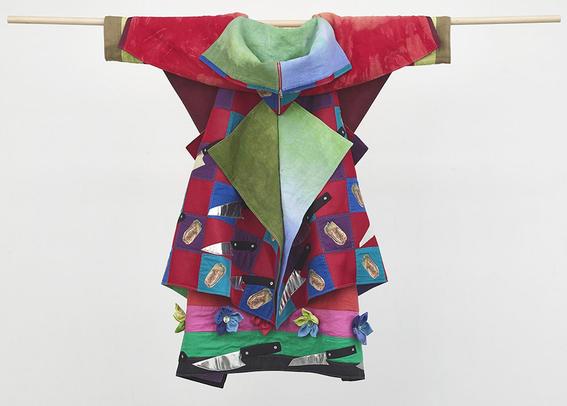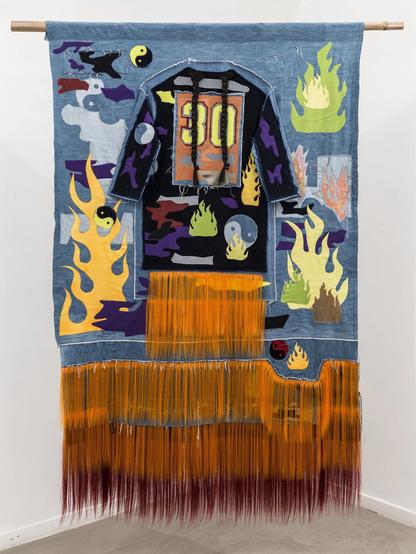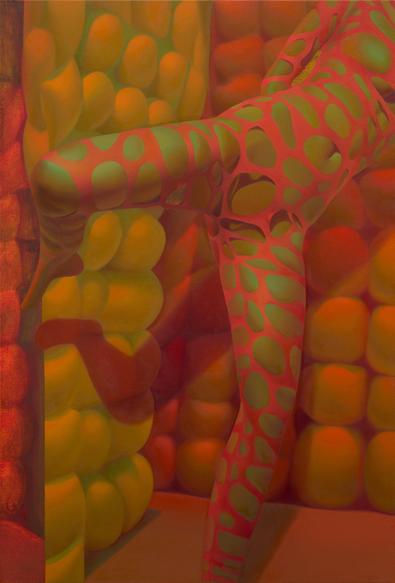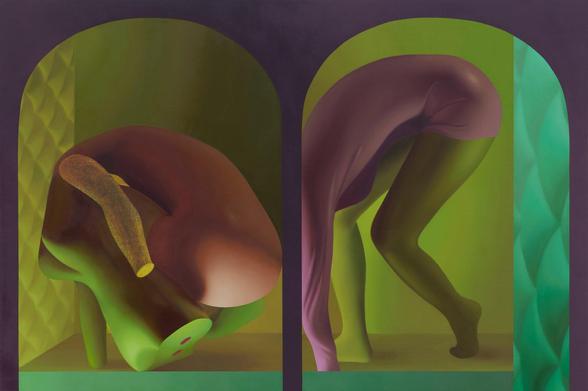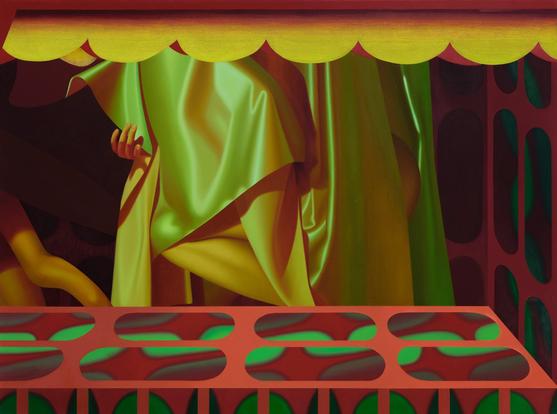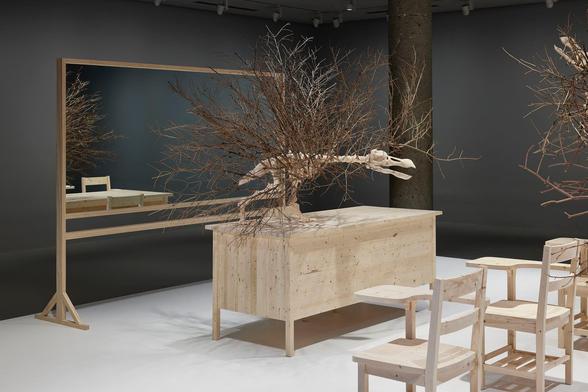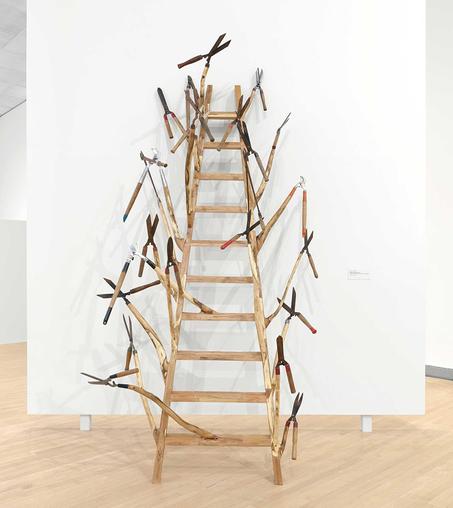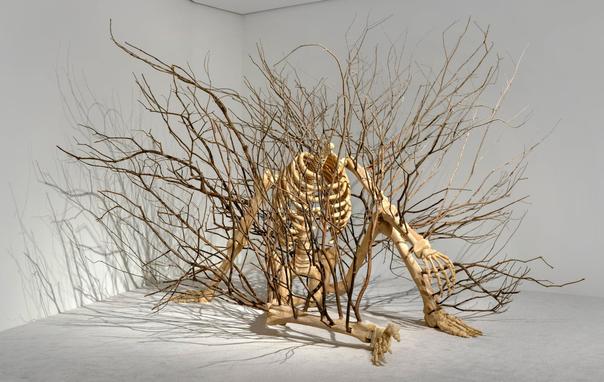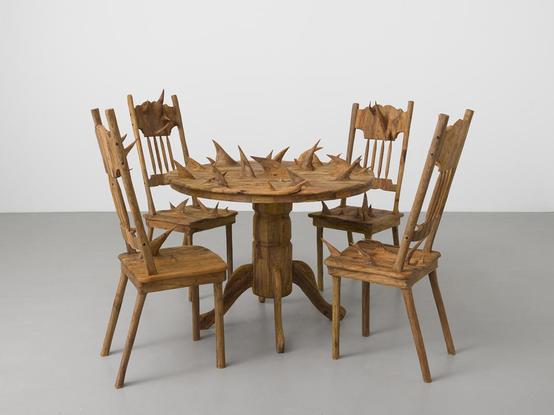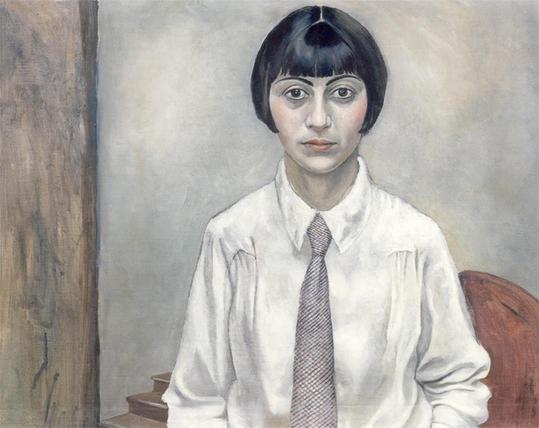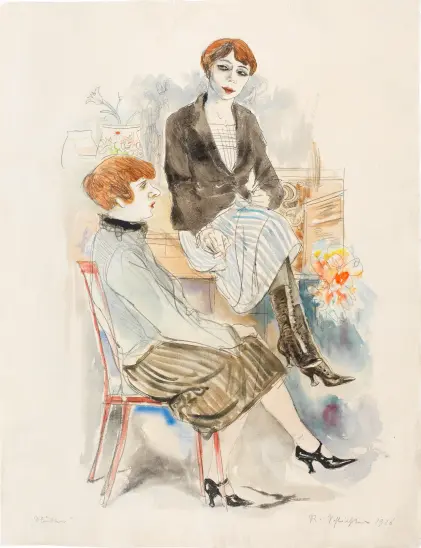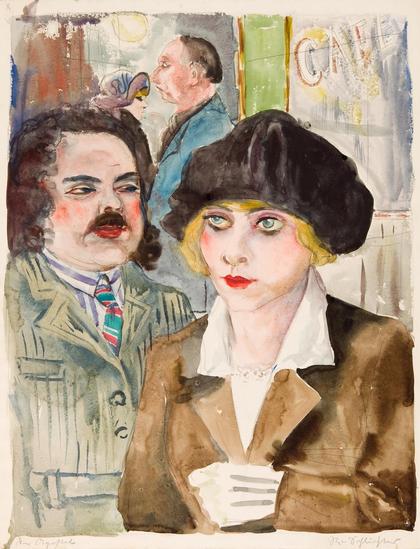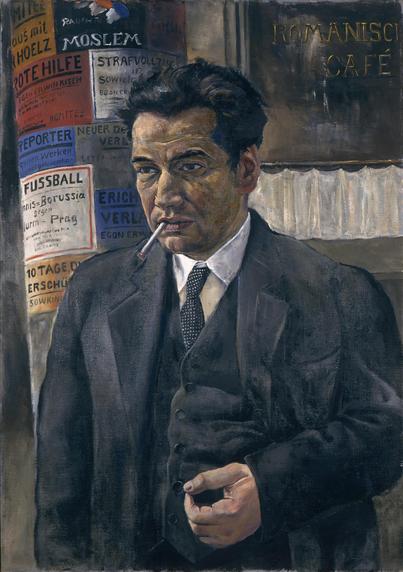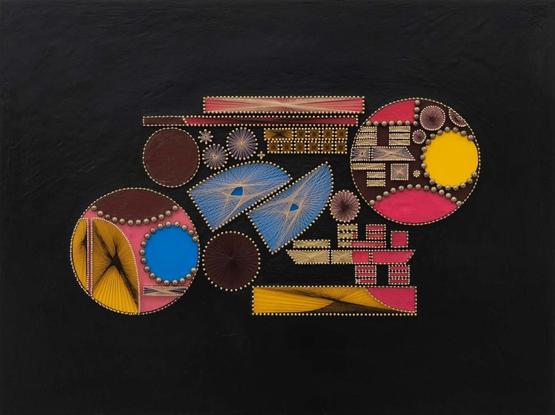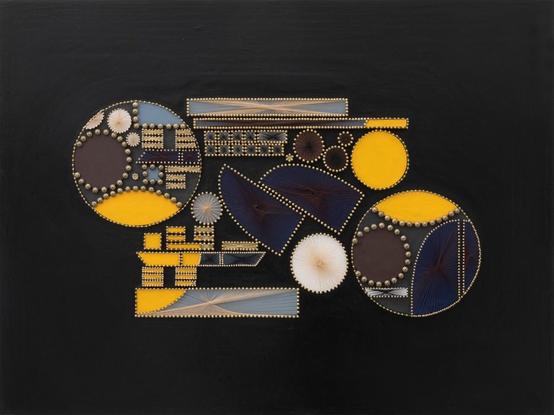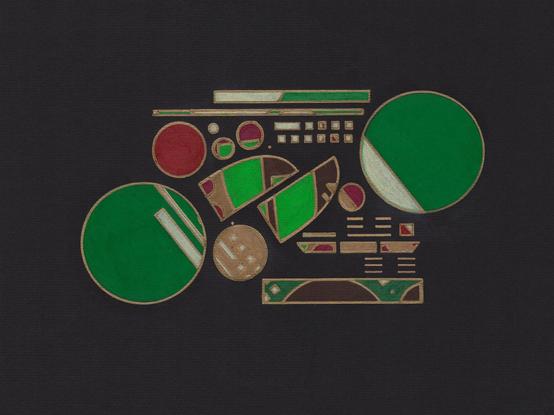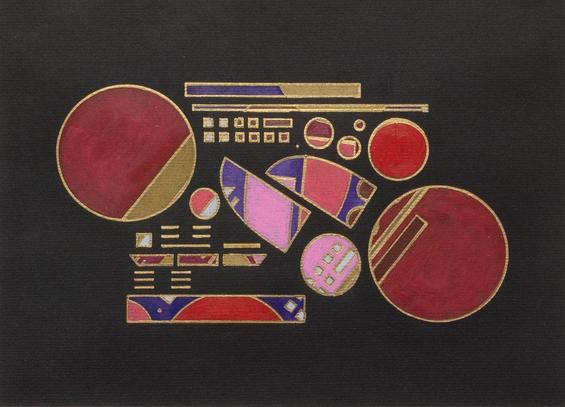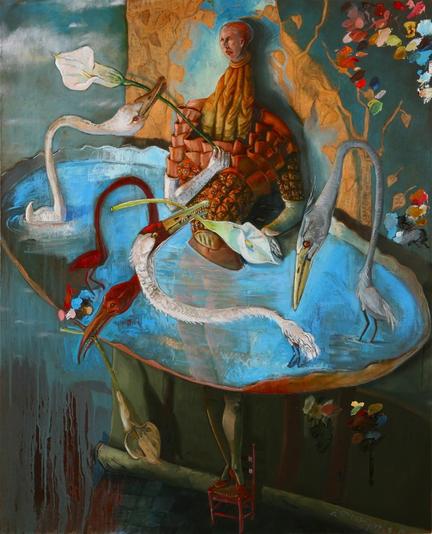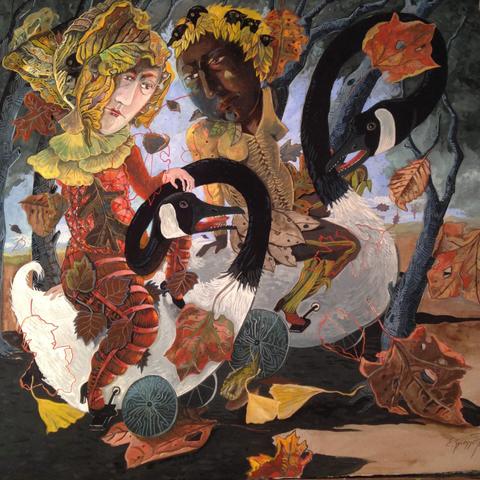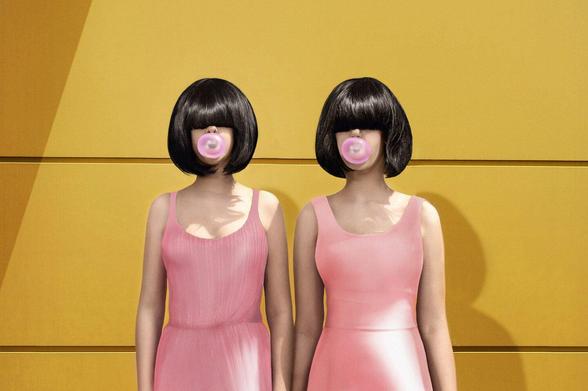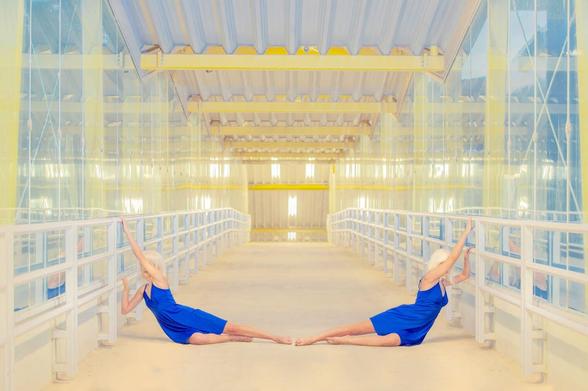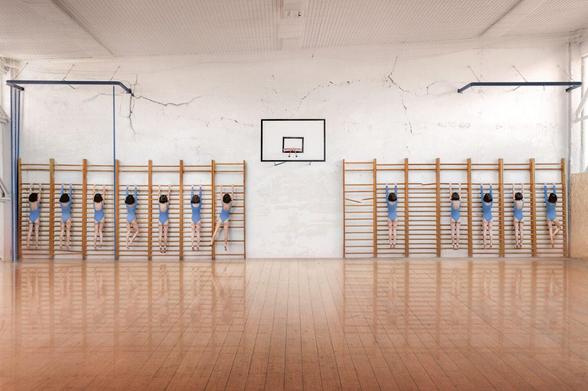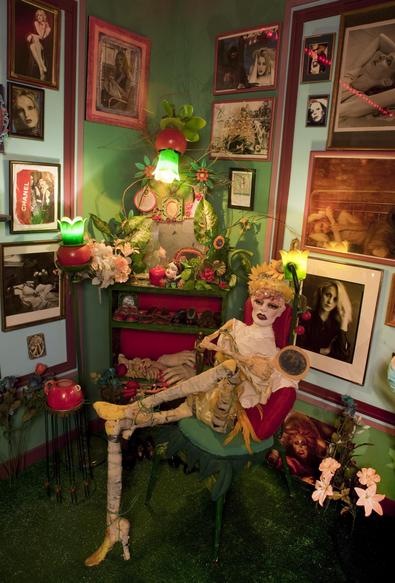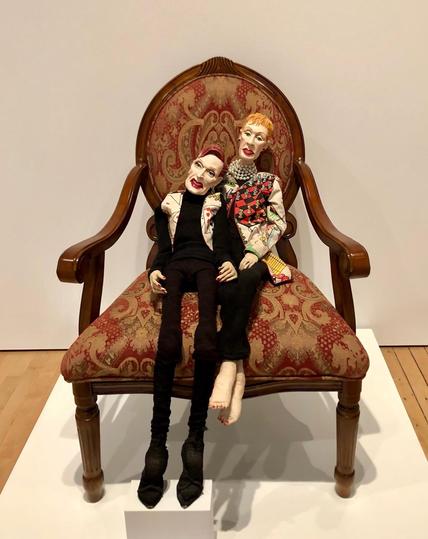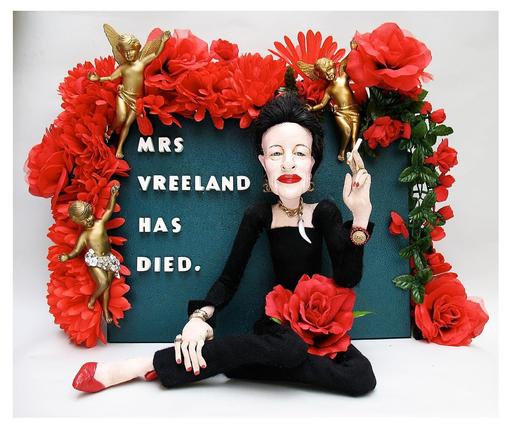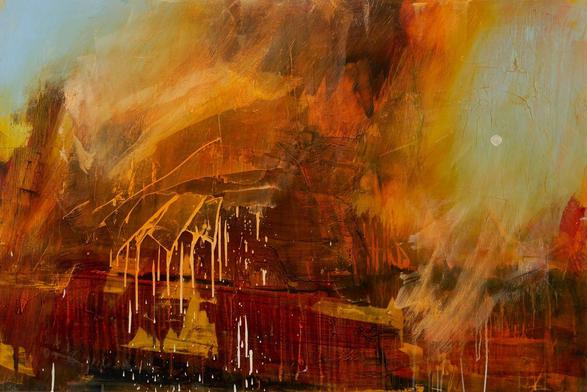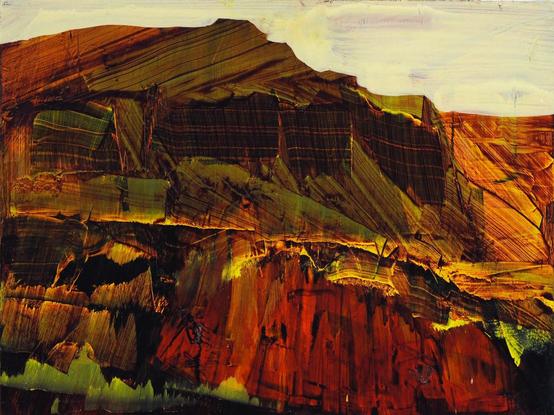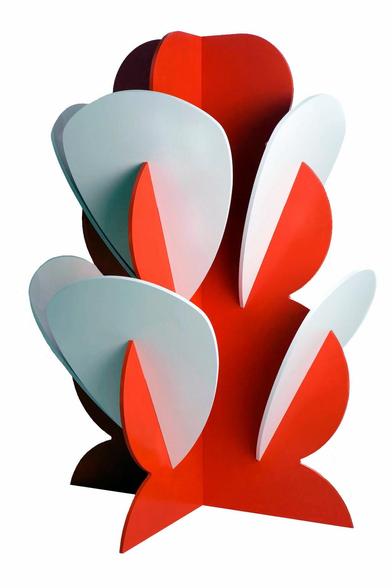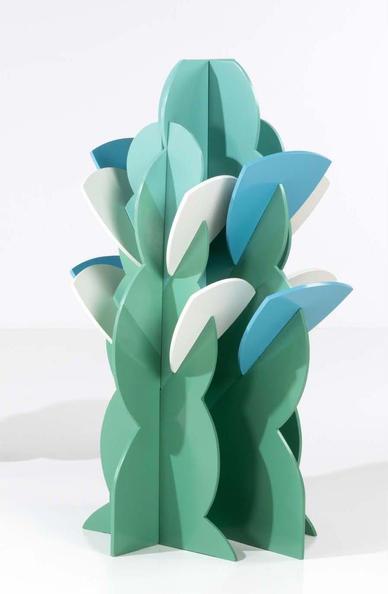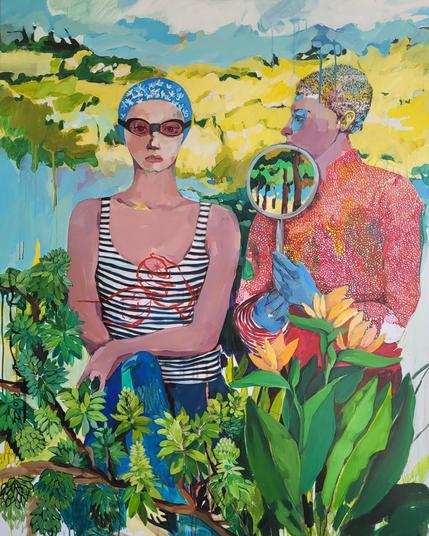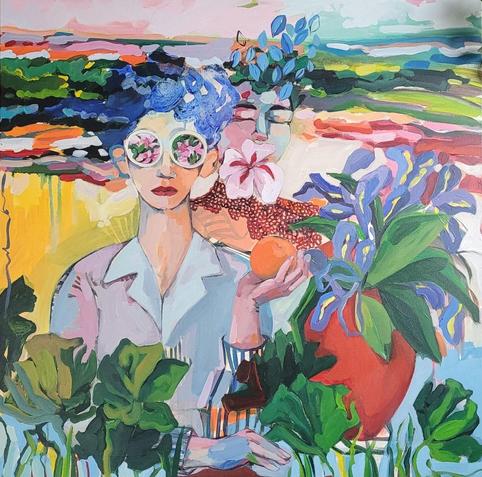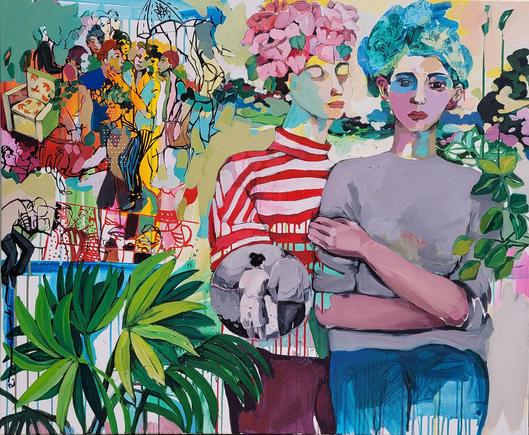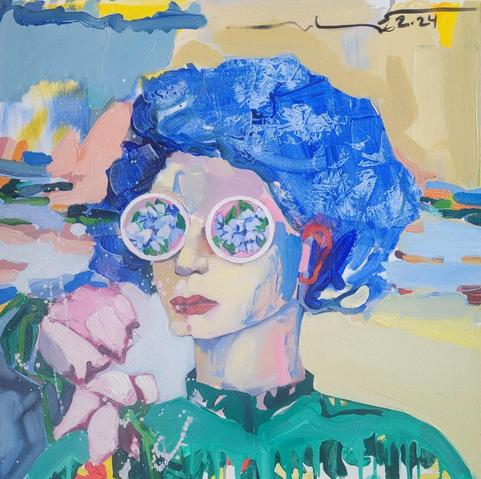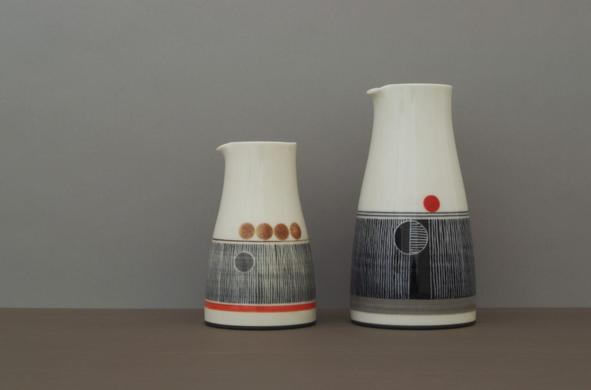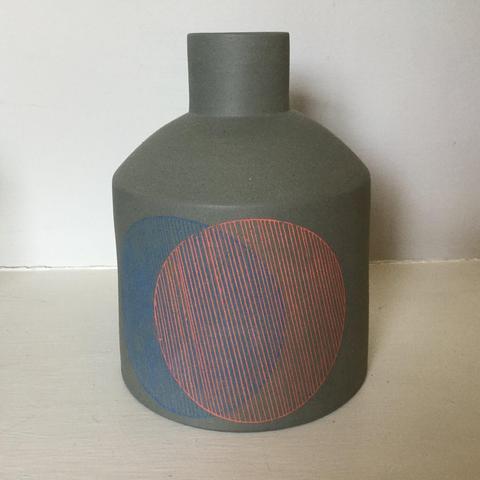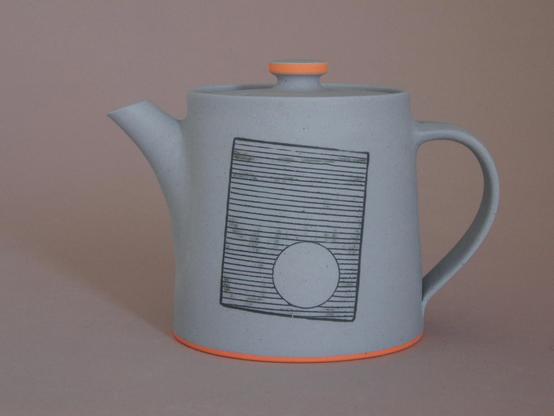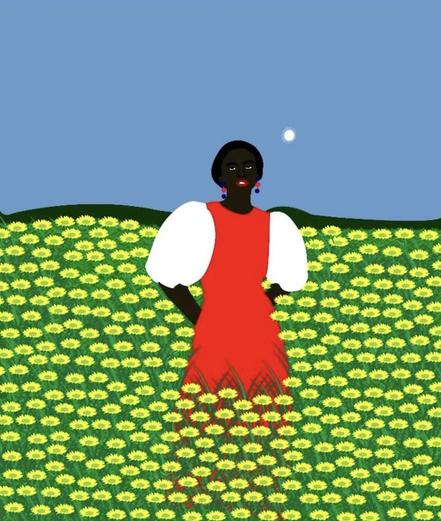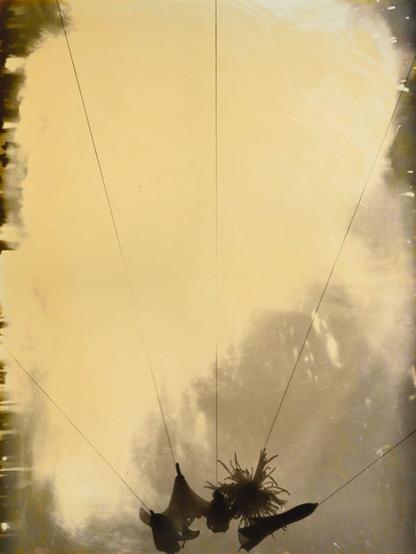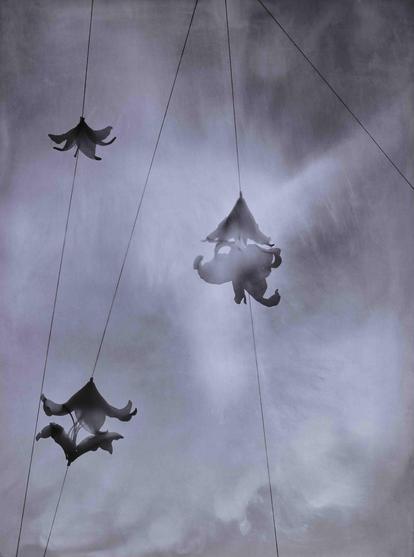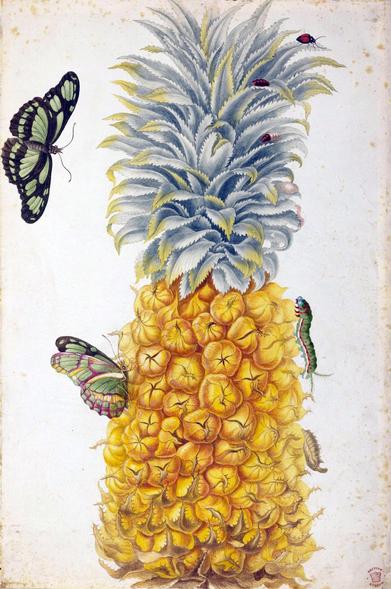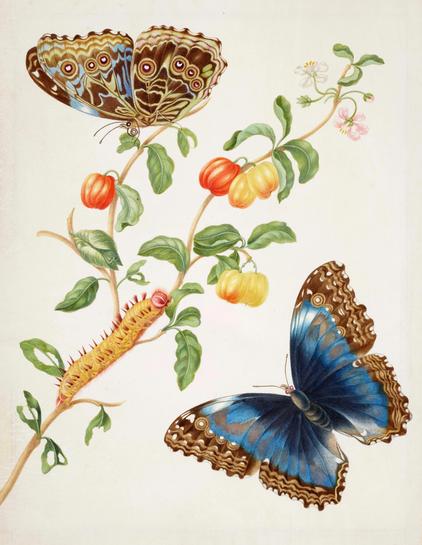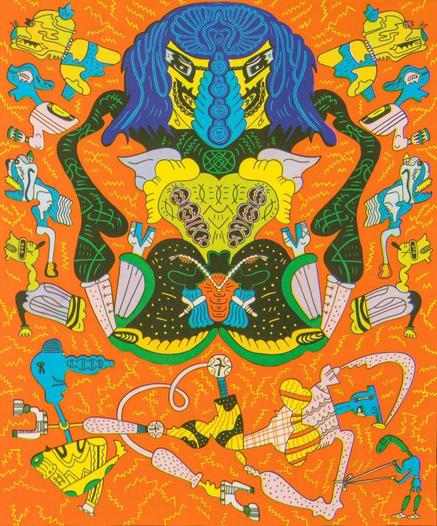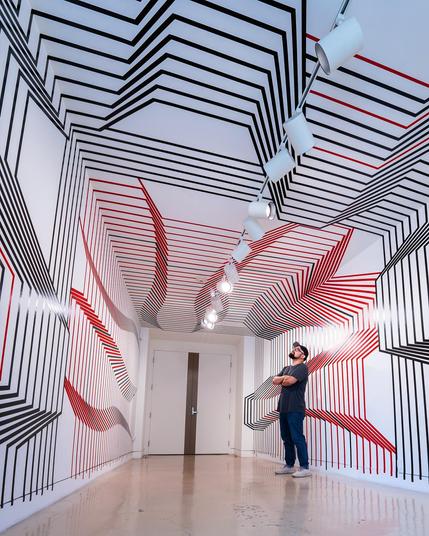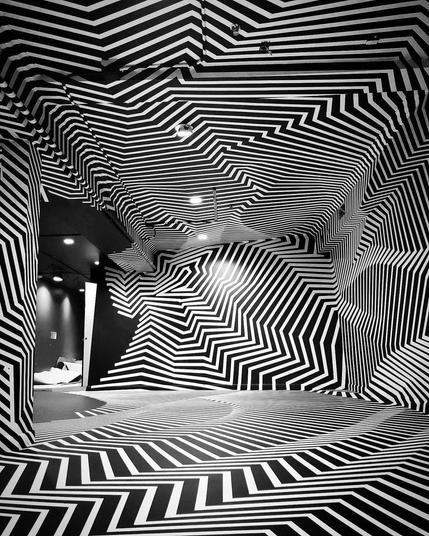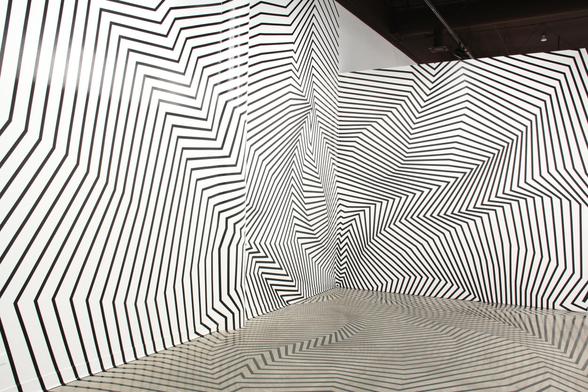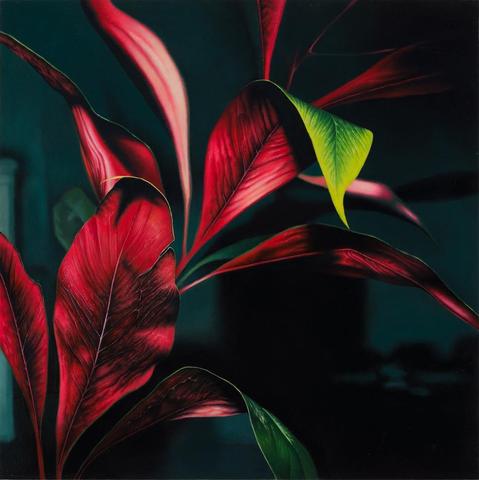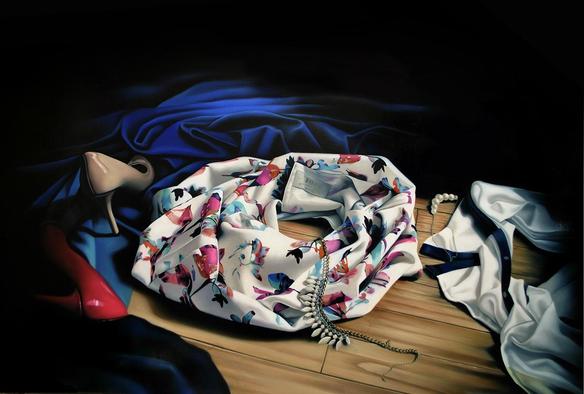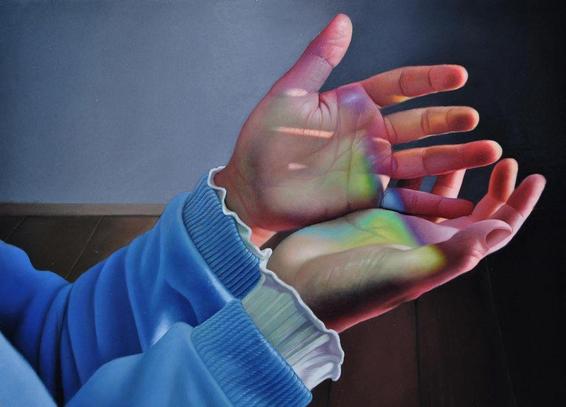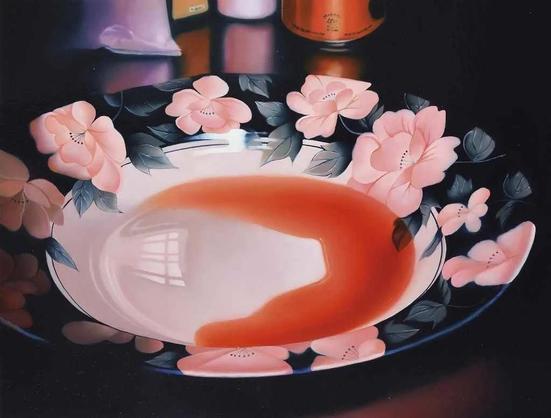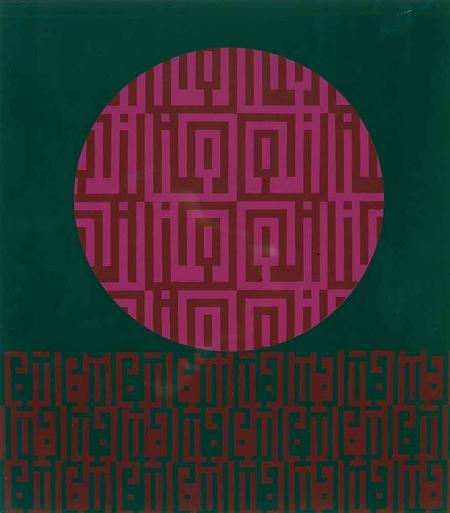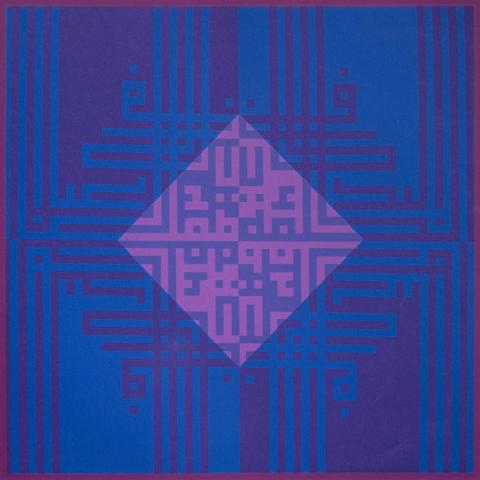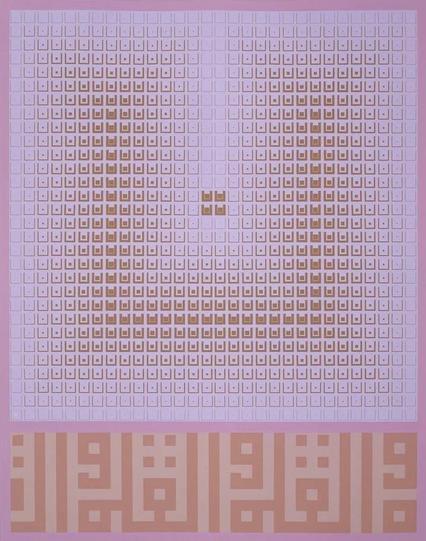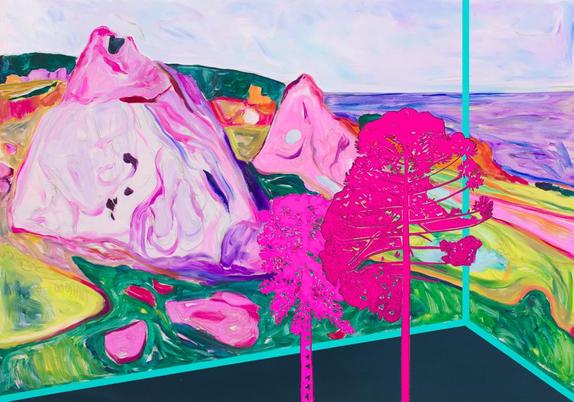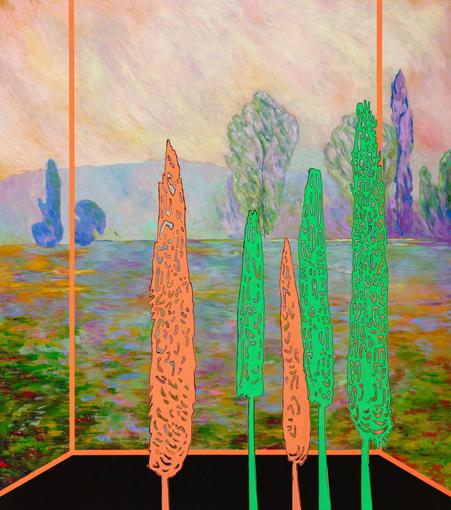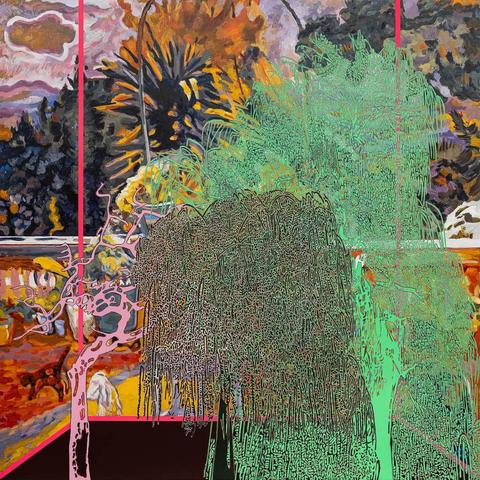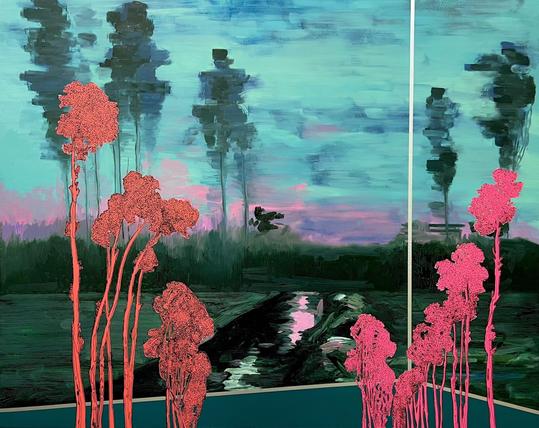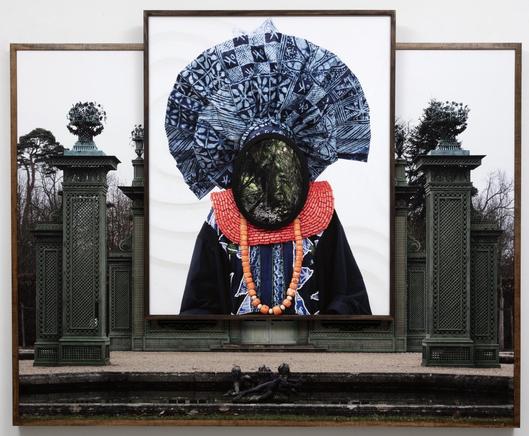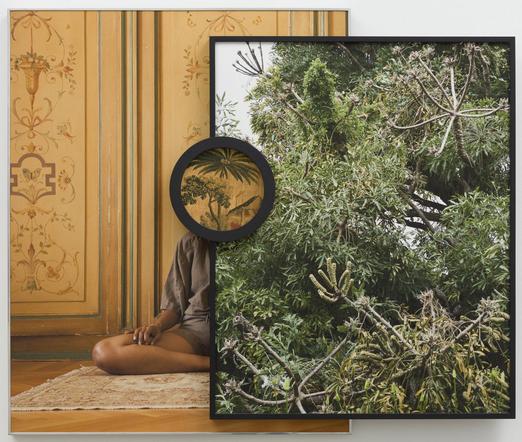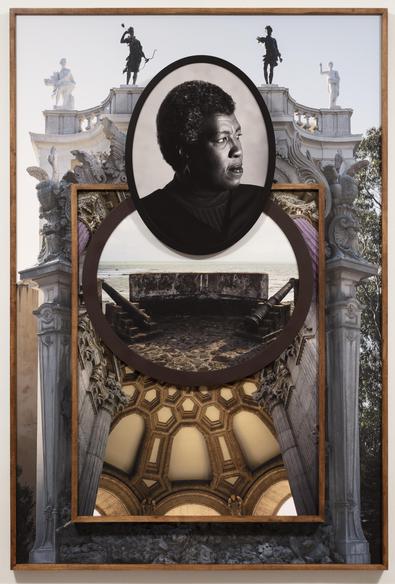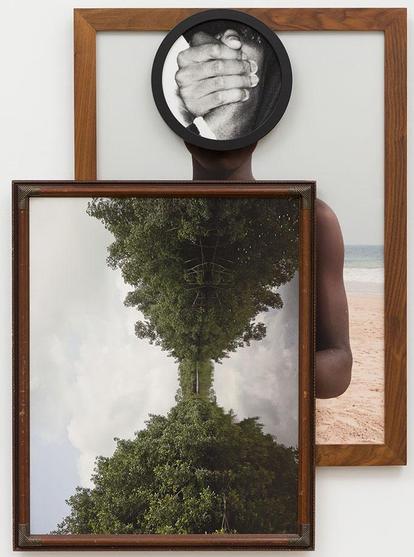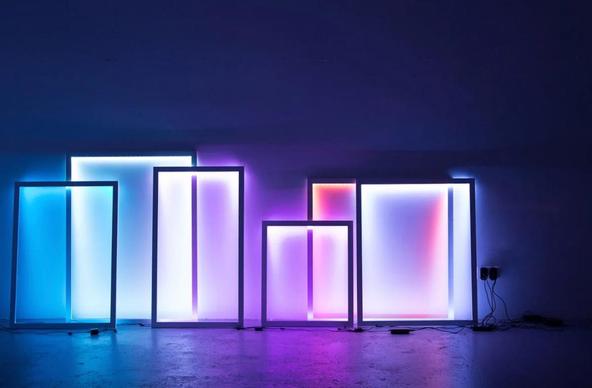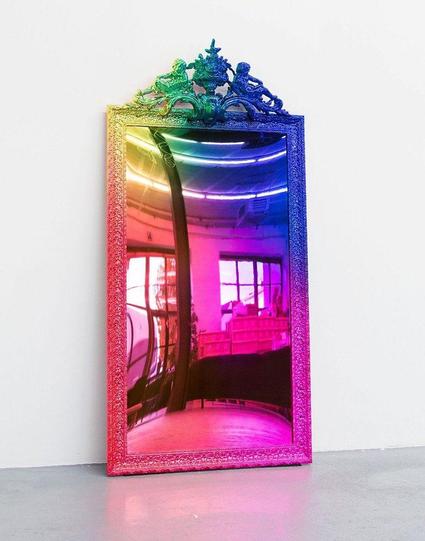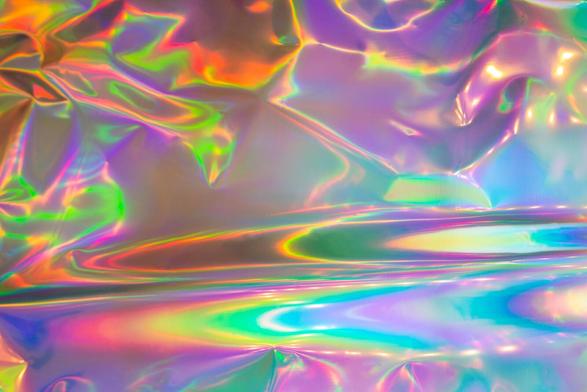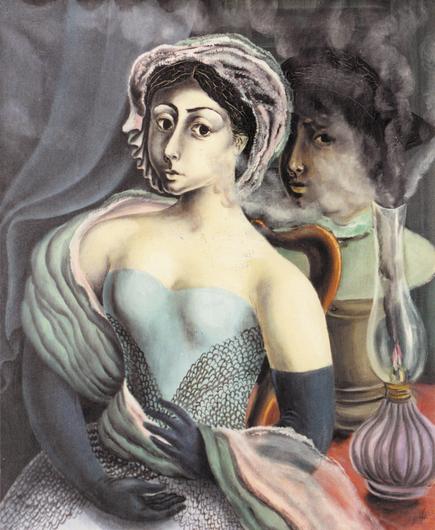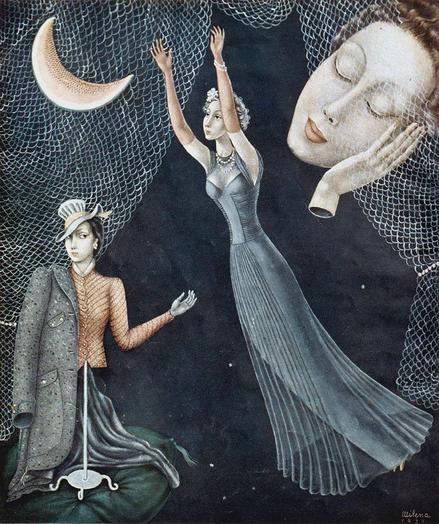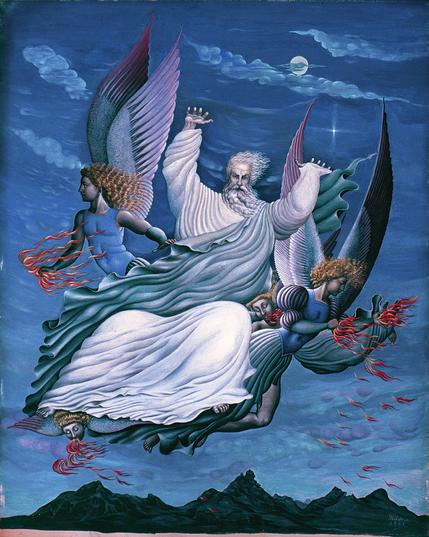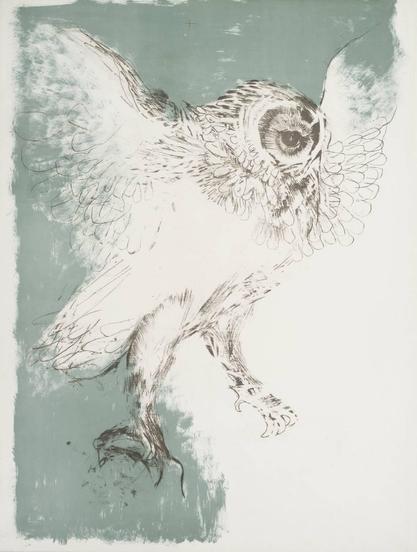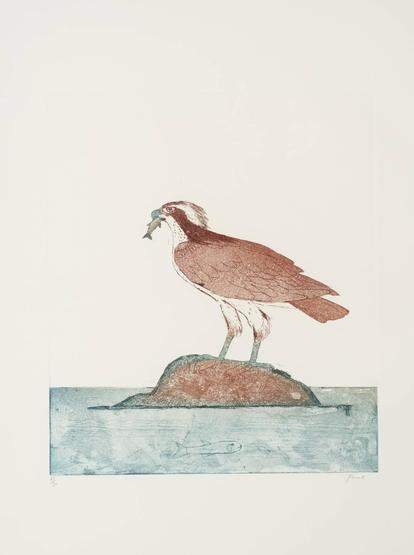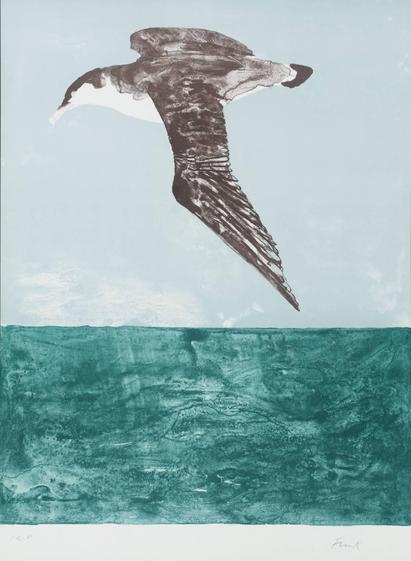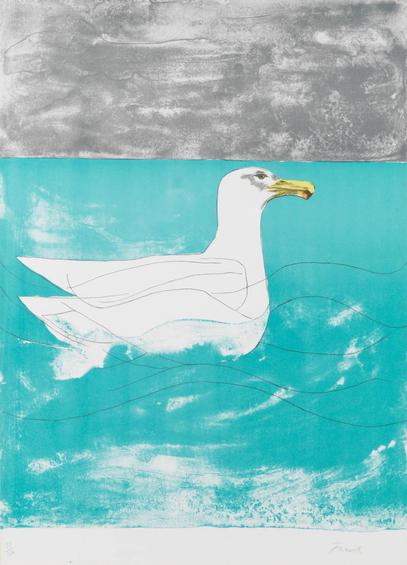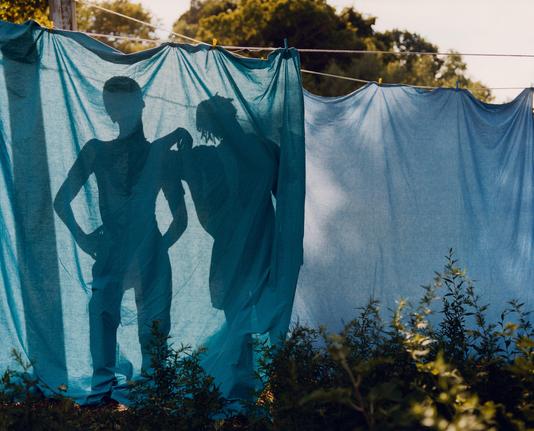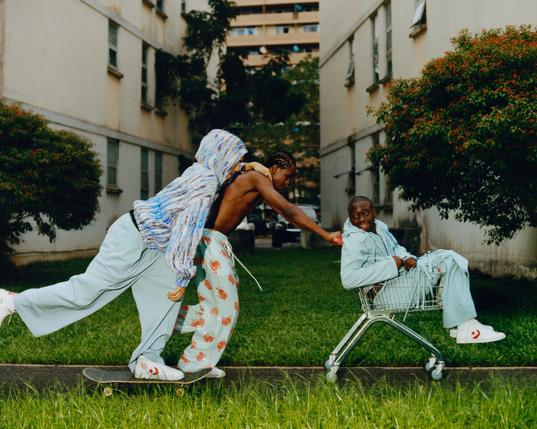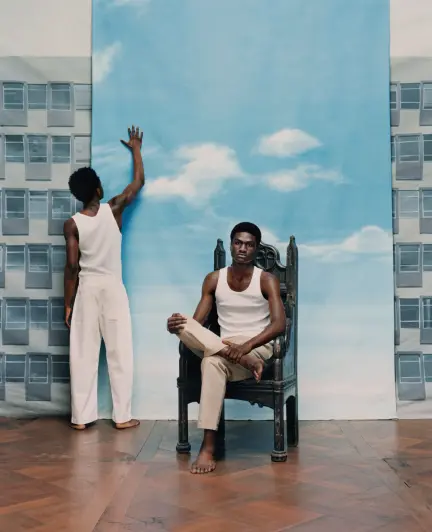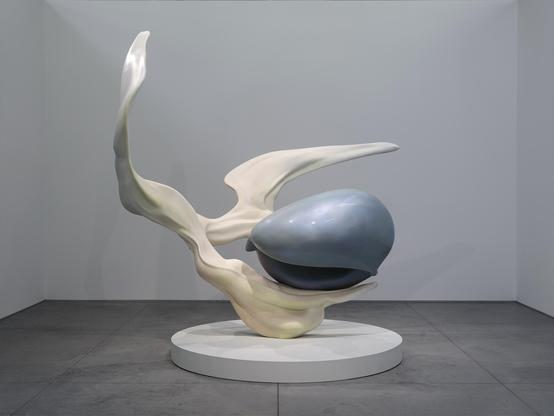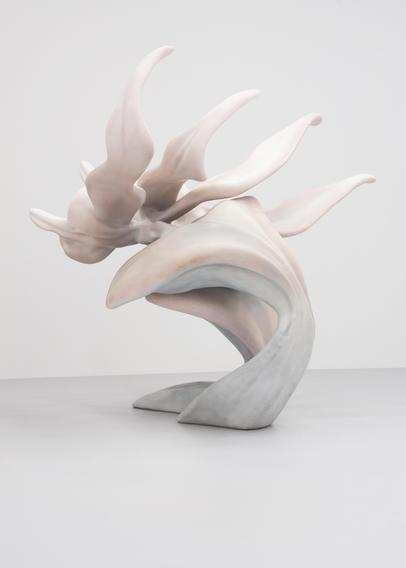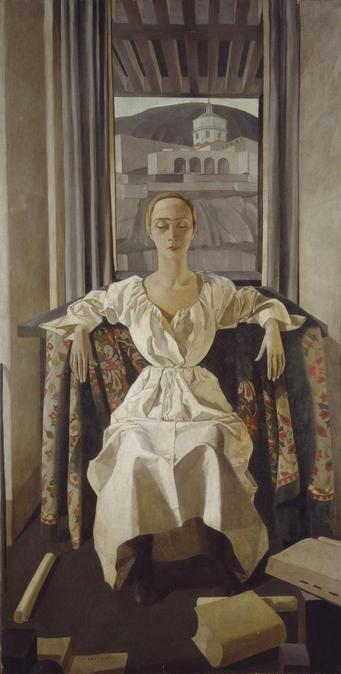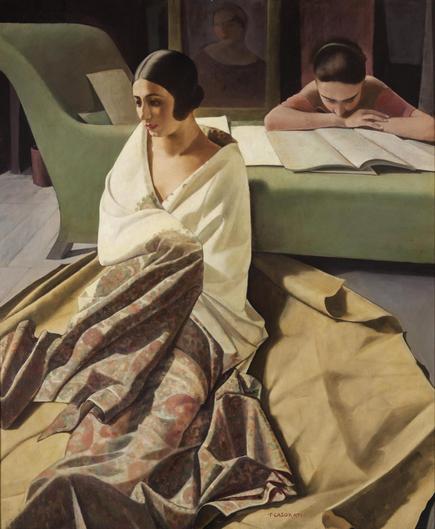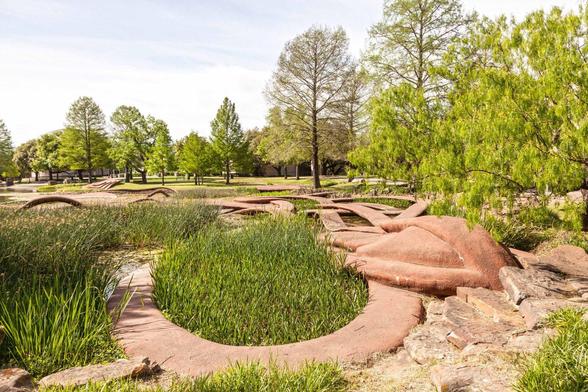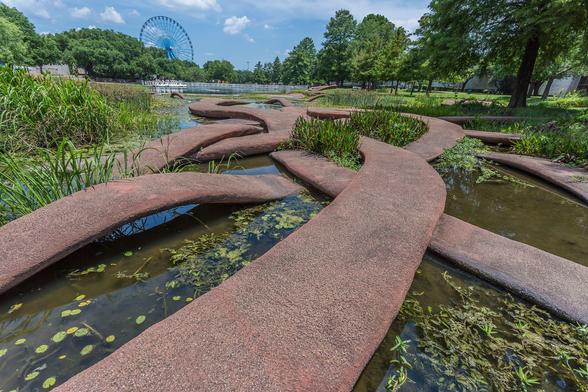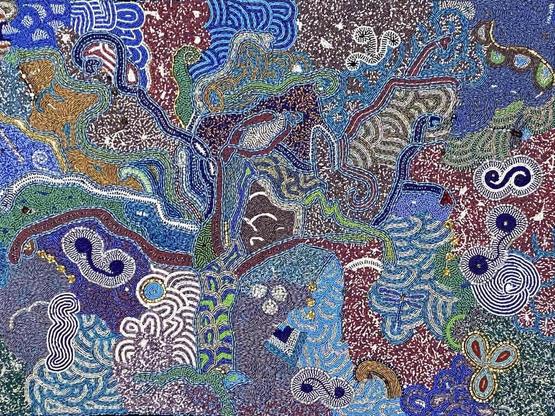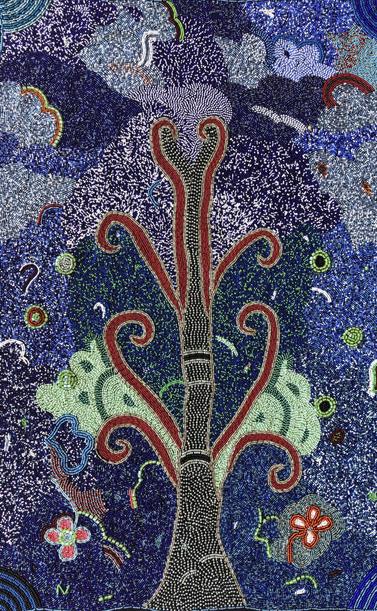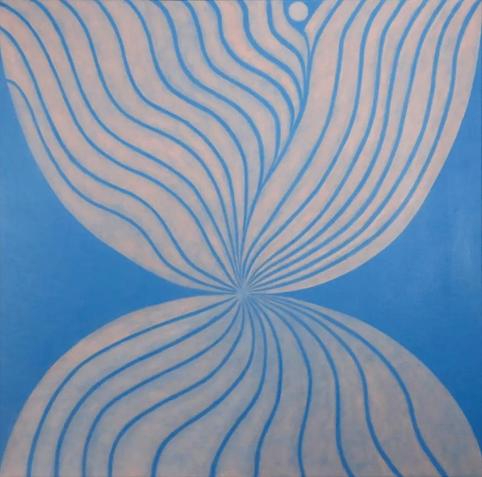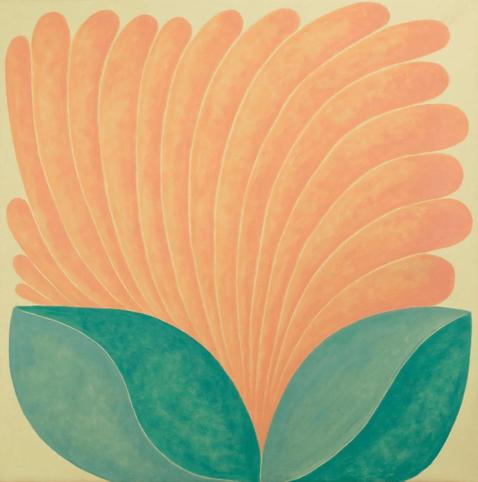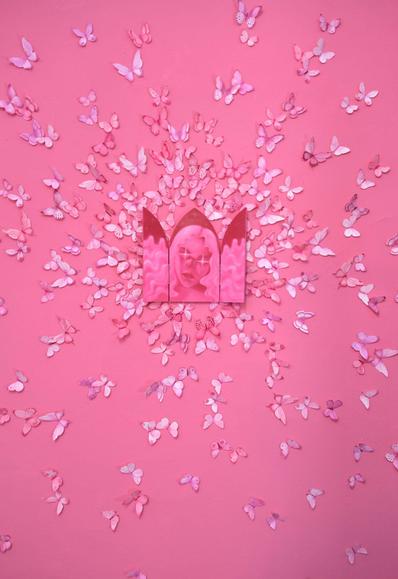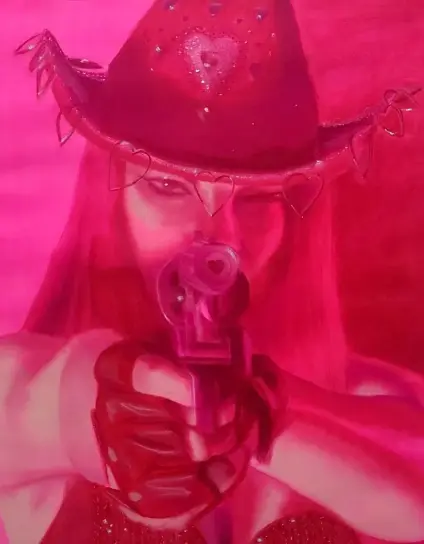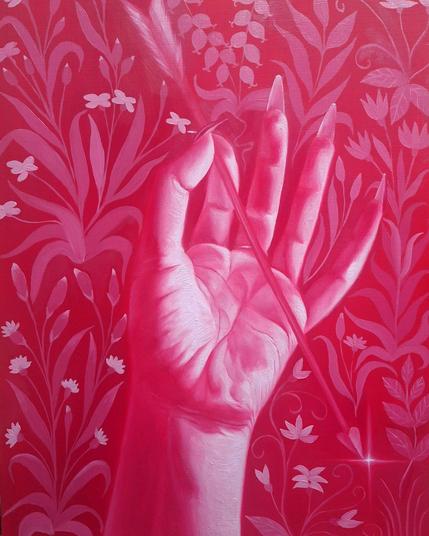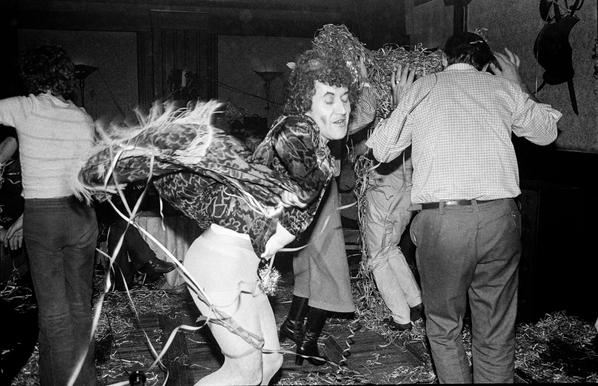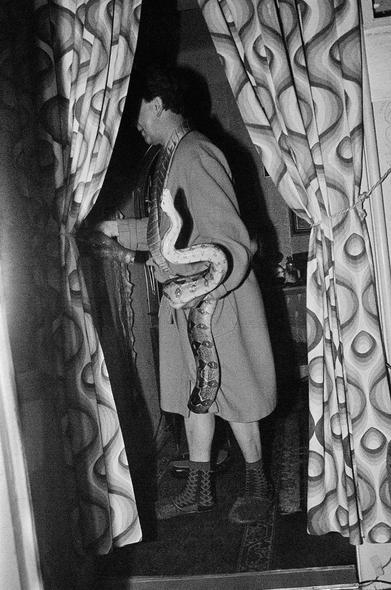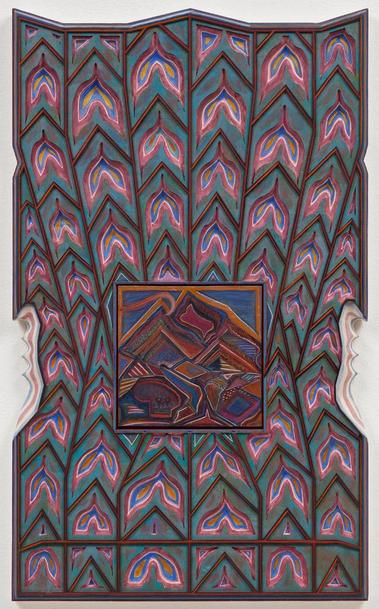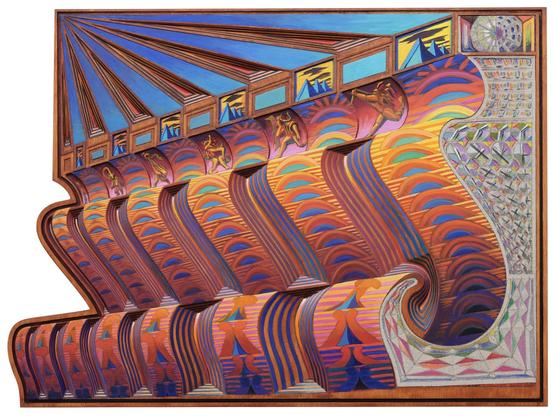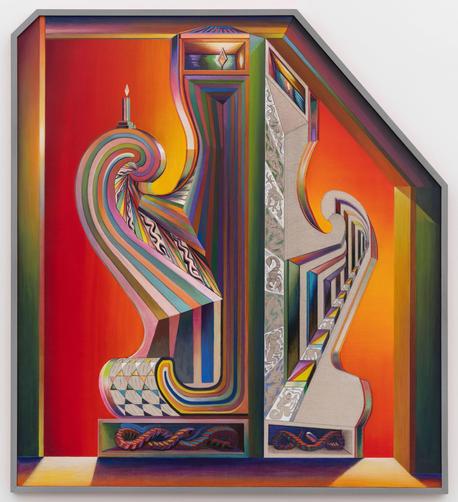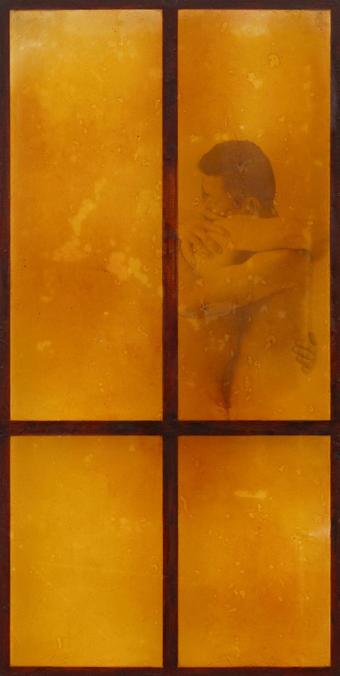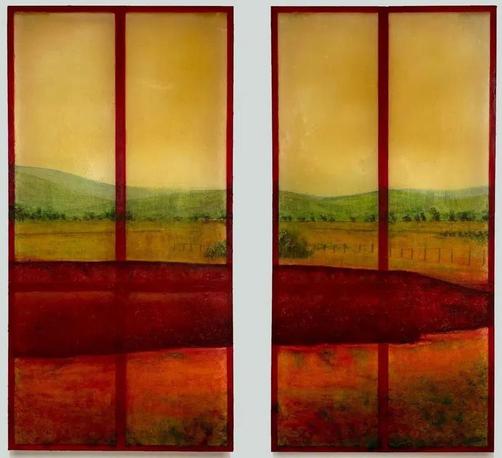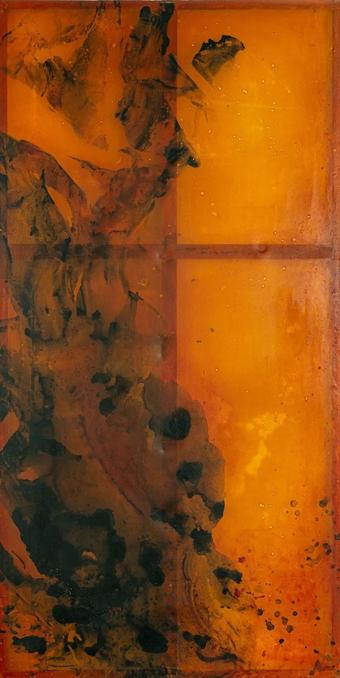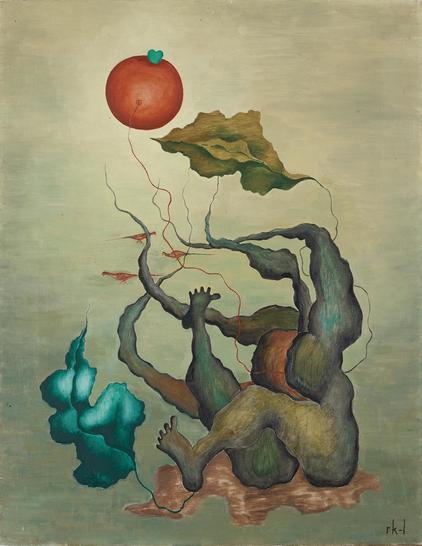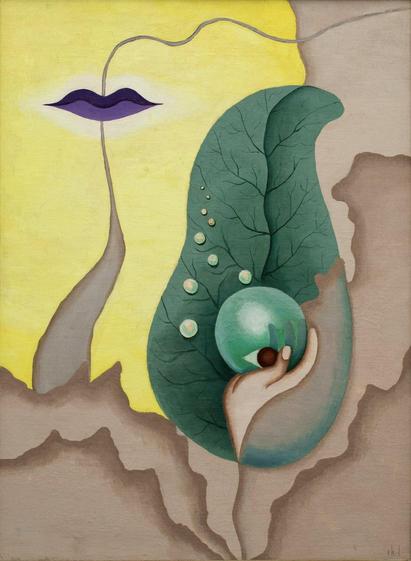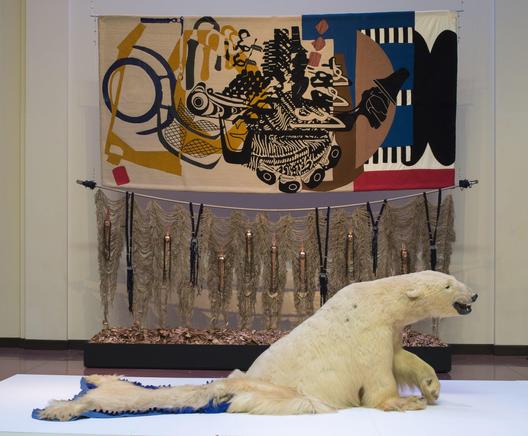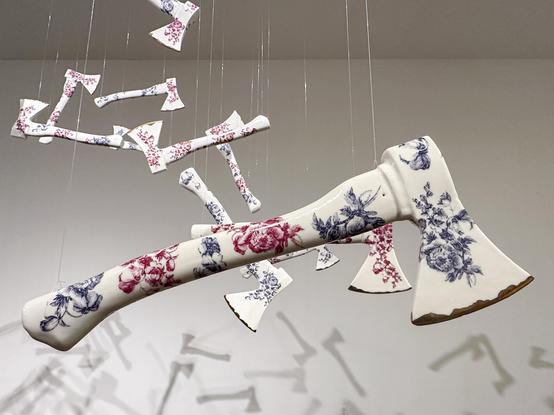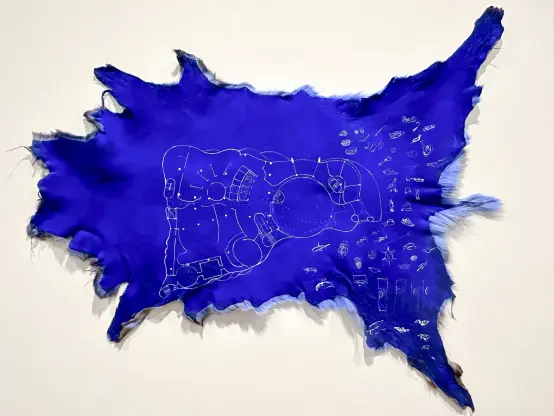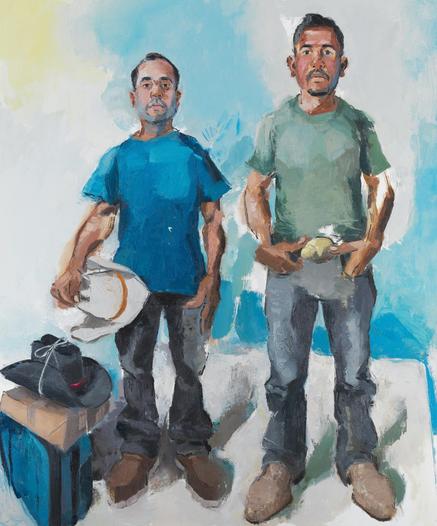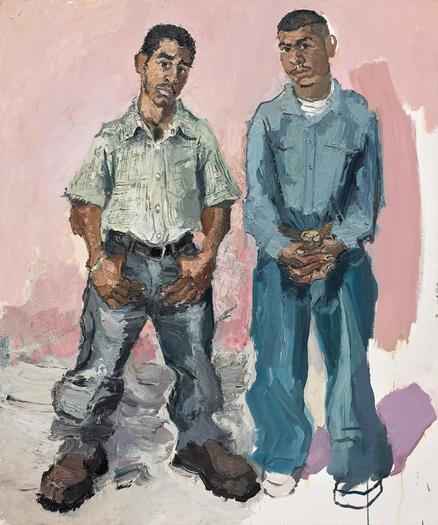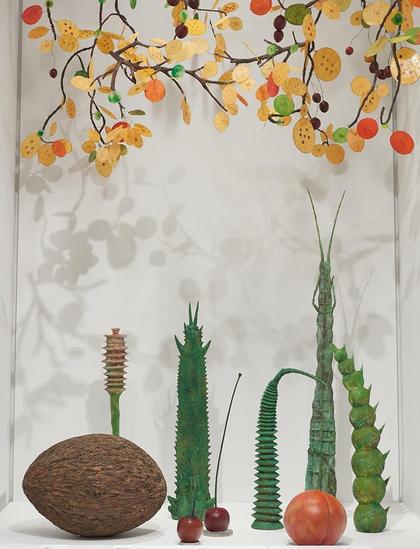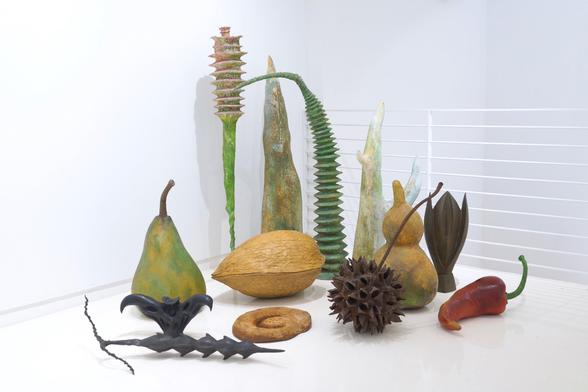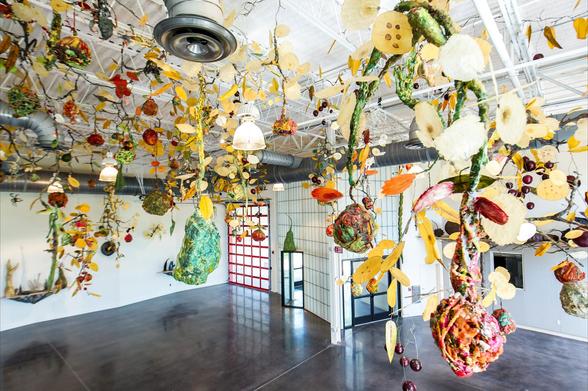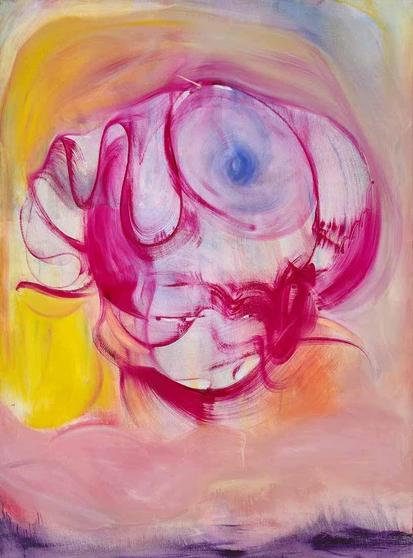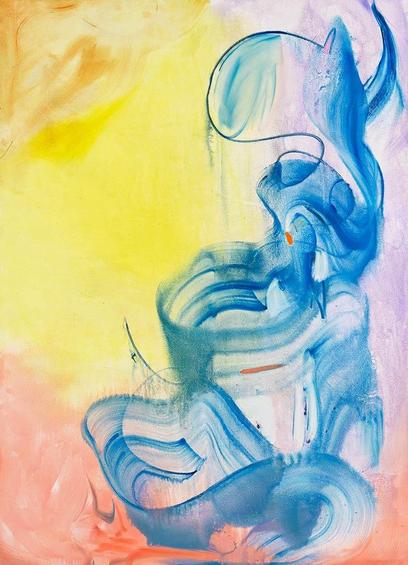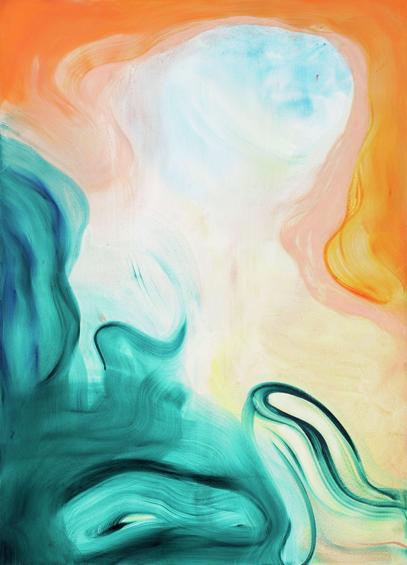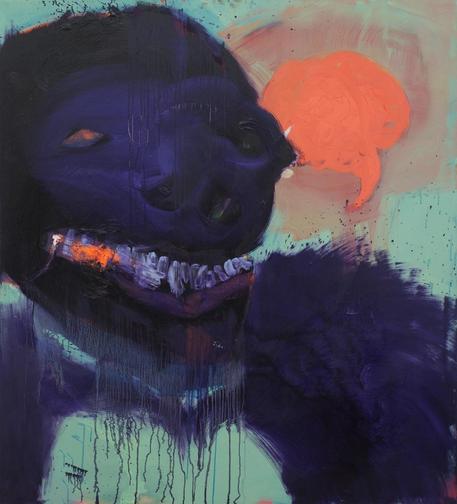Works by American artist Don Suggs, 2010s, painting concentric circle motifs over grayscale photos of national parks, canyons, and natural landmarks, which each color representing different elements of the landscape.
Self-portraits by multidisciplinary American artist and filmmaker Tourmaline, 2020, whose work centers Black queer and trans subjects and histories. This series was inspired by Black-owned pleasure gardens in Lower Manhattan in the 1820s.
Installation works by Icelandic Danish artist Olafur Eliasson, 2000s-20s.
Sculpture by American artist Ferne Jacobs, 2000s-10s, whose innovative technique uses coiled and waxed linen thread to build up abstract structures.
Paintings by French surrealist artist Pierre Roy, 1920s-30s.
Paintings by Iran-born British artist Samira Abbassy, 2020s, whose work explores her Persian-Iranian heritage and traditions as experienced at a distance, having grown up in a Western environment.
Works by Japanese photographer Nayao Hatakeyama, 1990s-2000s, whose imagery explores landscape and cityscapes, and especially human intervention upon the land.
Large-scale paintings by French artist Diane Dal-pra, 2020s.
Illustrations by American reporter, screenwriter, and artist Wallace Smith, 1922, made for the novel Fantazius Mallare by Ben Hecht.
Sculptural paintings by Florida-based Puerto Rican artist Steph Blondet, 2020s, combining clay and acrylic paint on wood panel.
Paintings by self-taught Brazilian artist Maria Auxiliadora, 1970s.
Ceramic sculpture by Italian artist Luca Staccioli, 2024, whose "Multifunctional queue eliminator kit (prickly pears)" works are inspired by snail-shaped ticket dispensers used at market counters, the shape repeated and turned into organic cacti-like forms.
Paintings by American artist Stephen Towns, 2020s, whose practice elevates Black American figures often left out of mainstream histories, such as miners, service workers, and prisoners.
Works by Japanese artist Kosen Ohtsubo, 1970s-90s, whose practice pushes the limits of ikebana (the Japanese art of flower arranging).
Paintings by American artist Pat Lipsky, 1970s, who was associated with the Color Field and Lyrical Abstraction movements.
Textile pieces by Canadian artist Zadie Xa, 2010s-20s, whose work "is informed by her experiences within the Korean diaspora, traditional folk tales, and mythology as well as the environmental and cultural context of the Pacific Northwest."
Paintings by Ethiopian-born, Milan-based artist Jem Perucchini, 2020s, whose portraits center Black figures in Renaissance-inspired compositions.
Works by American artist and occultist Marjorie Cameron Parsons (aka Cameron), 1950s-60s, who was introduced to Aleister Crowley's Thelemic religion through her husband, rocket scientist Jack Parsons. She was affiliated with the LA avant-garde, working w/ Curtis Harrington and Kenneth Anger.
Paintings by English artist Clare Woods, 2020s, whose compositions are based on found and personal photographs.
Sculpture by Helen Pashgian, 2000s-20s, who was a member of the Light and Space Movement in the 60s, known for her use of industrial and semi-translucent materials that capture light.
Collages by NYC-based Bahamian artist Tavares Strachen, 2020s, whose "The Encyclopedia of Invisibility" is a research-based project that combines art, science, history, and cultural critique while exploring invisibility, displacement, and loss.
Works by German American photographer Uta Barth, 1990s, whose practice explores the ephemeral qualities of light and its destabilizing effect on vision.
#art #photography BigArtThread
Works by Moroccan artist Latifa Toujani, 1970s.
Paintings by American artist Kate Meissner, 2020s.
Sculpture by American artist Hugh Hayden, 2010s-20s, whose practice often incorporates salvaged wood into metaphors for the Black American experience, exploring how human interactions with the environment connect to class, race, and identity.
Works by German artist Rudolf Schlichter, 1920s, a member of the New Objectivity movement known for his portraits depicting urban life in Weimar Berlin. In the 30s he was denounced as "Degenerate" by the Nazis, and his studio was destroyed by Allied bombs in 1942.
Works by Puerto Rican NYC (Nuyorican) artist Glendalys Medina, 2020s, who created these abstract works as exercises in gratitude, a practice they started in the early days of the pandemic.
Paintings by American artist Eleanor Spiess-Ferris, 2000s-10s.
Photos by Slovak artist Jana Šantavá, 2020s, known for her surreal imagery often employing doubles, mirrors, and bold color palettes.
Sculpture by American artist Greer Lankton, 1980s-90s, whose distinctive dolls and installations reflected her own experiences as a trans woman and drug user, along with odes to icons like Candy Darling, Diana Vreeland, and Divine.
Abstract paintings by Walla Walla artist James Lavadour, 2000s-10s, who grew up on the Umatilla Indian Reservation and whose work is inspired by the Blue Mountains and landscapes of Western Oregon.
"Fiori Futuristi" (Futurist Flowers) sculpture by Italian artist Giacomo Balla, 1918-25 (reconstructed in 1968). Balla was a founding member of the Futurist movement, which celebrated industrialization, machinery, speed, and movement, often showing objects from multiple perspectives.
Paintings by Iranian artist Golnaz Afraz, 2020s.
Vessels by Welsh potters James and Tilla Waters, c 2010s, whose collaborative process typically has Tilla designing and coloring and James hand-throwing and forming the pieces.
Digital works by self-taught Nigerian artist Mamus Esiebo, 2020s.
Works by NY-based Japanese photographer Kunié Sugiura, 1990s, known for her experimental approach to the medium, often incorporating aspects of painting and sculpture.
Drawings by German entomologist, naturalist, and scientific illustrator Maria Sibylla Merian, 1670s-1700s, who published several illustrated volumes about insects and flowers.
Paintings by American artist Karl Wirsum, 1960s-70s, a member of the Hairy Who group of Chicago artists known for their playful sense of humor and often maximalist, colorful styles.
Site-specific installations by Los Angeles-based artist Darel Carey, 2010s, whose abstract tape compositions create geometric optical illusions.
Paintings by Japanese artist Tomona Matsukawa, 2010s-20s, known for her photorealistic depictions of everyday moments and domestic still lifes.
Works by Palestinian artist Kamal Boullata, 1970s-80s, whose imagery often incorporates Kufic script embedded in geometric compositions, with themes relating to displacement and cultural identity.
Paintings by American artist Whitney Bedford, 2020s, who reinterprets European landscapes by artists like Van Gogh, Munch, and Turner.
Photo assemblages by American artist Todd Gray, 2010s-20s, whose photographic practice "aims to provoke reconsiderations of long-accepted norms and beliefs surrounding the medium", exploring themes of African diaspora, colonialism, and societal power structures.
Works by Luxembourgish artist Sali Muller, 2010s-20s, known for her use of reflective materials and light.
Paintings by Serbian artist, illustrator, and poet Milena Pavlović Barili, 1930s-40s, who was associated with the Surrealist movement and became a fashion illustrator and society portrait painter after moving to America in 1939.
Prints by English artist Elisabeth Frink, 1960s-70s.
Works by American photographer Tyler Mitchell, 2010s-20s, whose imagery seeks "to visualize what a Black utopia looks like or could look like."
Sculpture by London-based French artist Marguerite Humeau, 2010s-20s, whose practice explores evolution, biology, and relationships between humans, animals, and plants.
Paintings by Italian artist Felice Casorati, 1920s.
Fair Park Lagoon landscaping project by American artist Patricia Johanson, 1981-86, who reinvigorated a dying swamp in Dallas into an ecologically rich habitat with indigenous plants and sculptural coral walkways, using art as a form of bioremediation.
Beaded compositions by South African artist Ntombephi Ntobela, 2010s-20s.
Paintings by Brooklyn-based Iranian brothers Saman and Sasan Oskouei, also known as Icy & Sot, 2020s.
Works by American artist Emma Hapner, 2020s.
Works by Czech photographer Libuše Jarcovjáková, 1970s-80s, who documented life in Czechoslovakia during the repressive "normalization" period, including the queer community.
Paintings on wood and linen by American artist Zach Harris, 2010s-20s.
Paintings by transnational (ethnically Chinese, born in Vietnam, raised in Canada, now based in Britain) artist KV Duong, 2020s, whose acrylic and latex works explore Vietnamese queer identity, migration, and cultural assimilation.
Paintings by Danish Surrealist Rita Kernn-Larsen, 1930s-40s, who was the focus of the first Surrealist exhibition curated by Peggy Guggenheim in London in 1938.
Sculpture and installation by Lingít and Unangax̂ artist Nicholas Galanin, 2010s-20s, whose practice "aims to redress the widespread misappropriation of Indigenous visual culture, the impact of colonialism, as well as collective amnesia."
Paintings by American artist John Sonsini, 2000s-20s, known for his expressive portraits of Latino laborers in California.
Sculpture and installation by NY-based Chinese artist Ming Fay, 1980s-2010s, known for his realistic large-scale fruit and plant forms.
Paintings by Berlin-based Polish artist Aneta Kajzer, 2020s.

